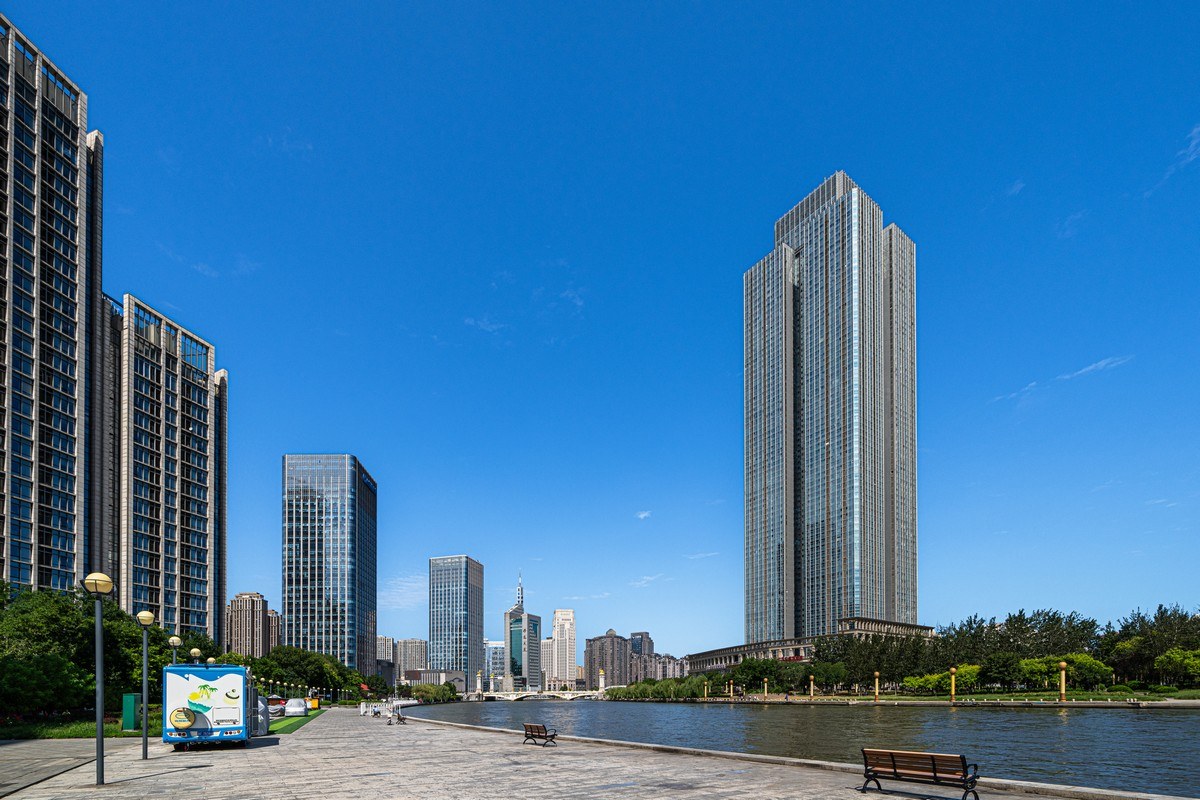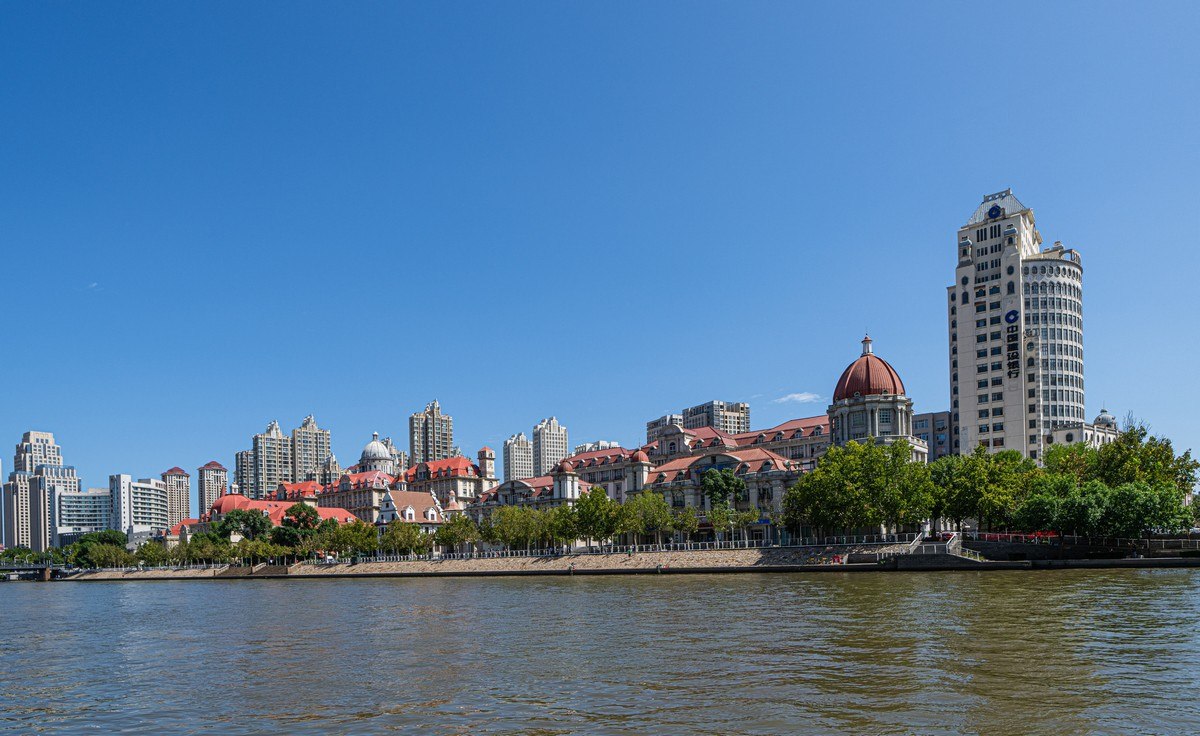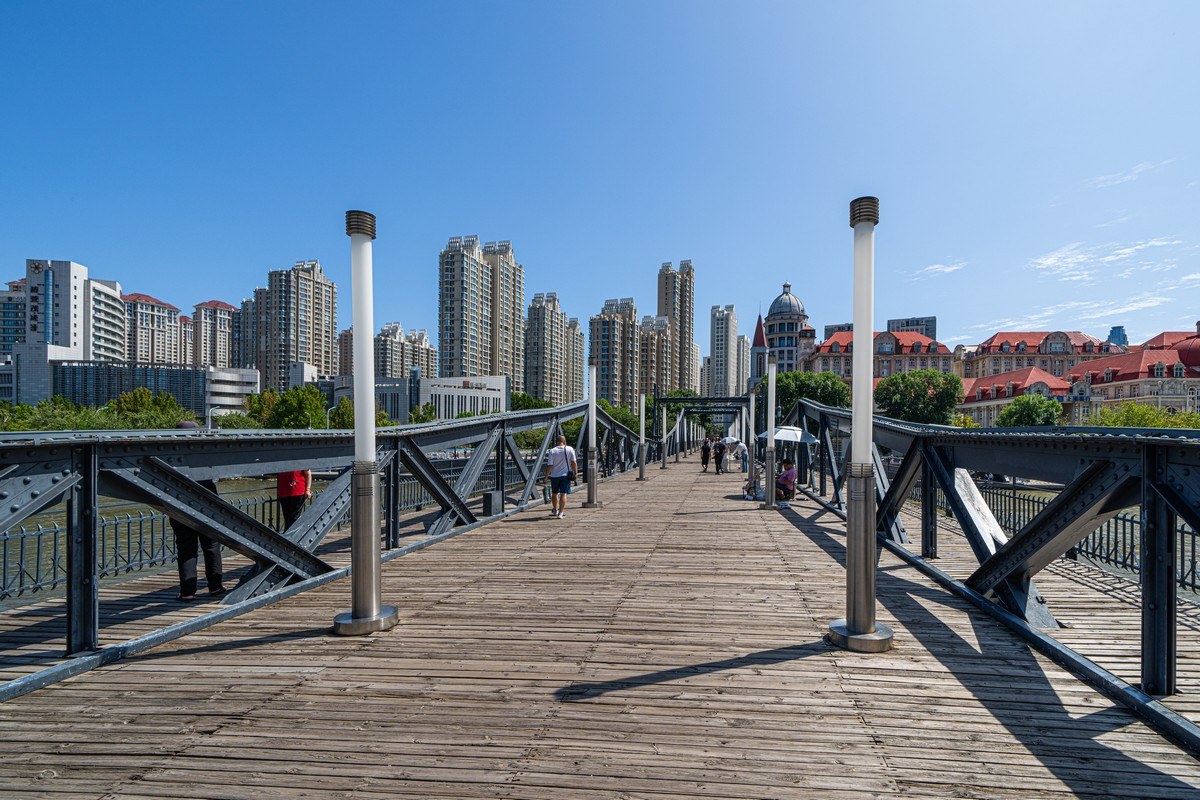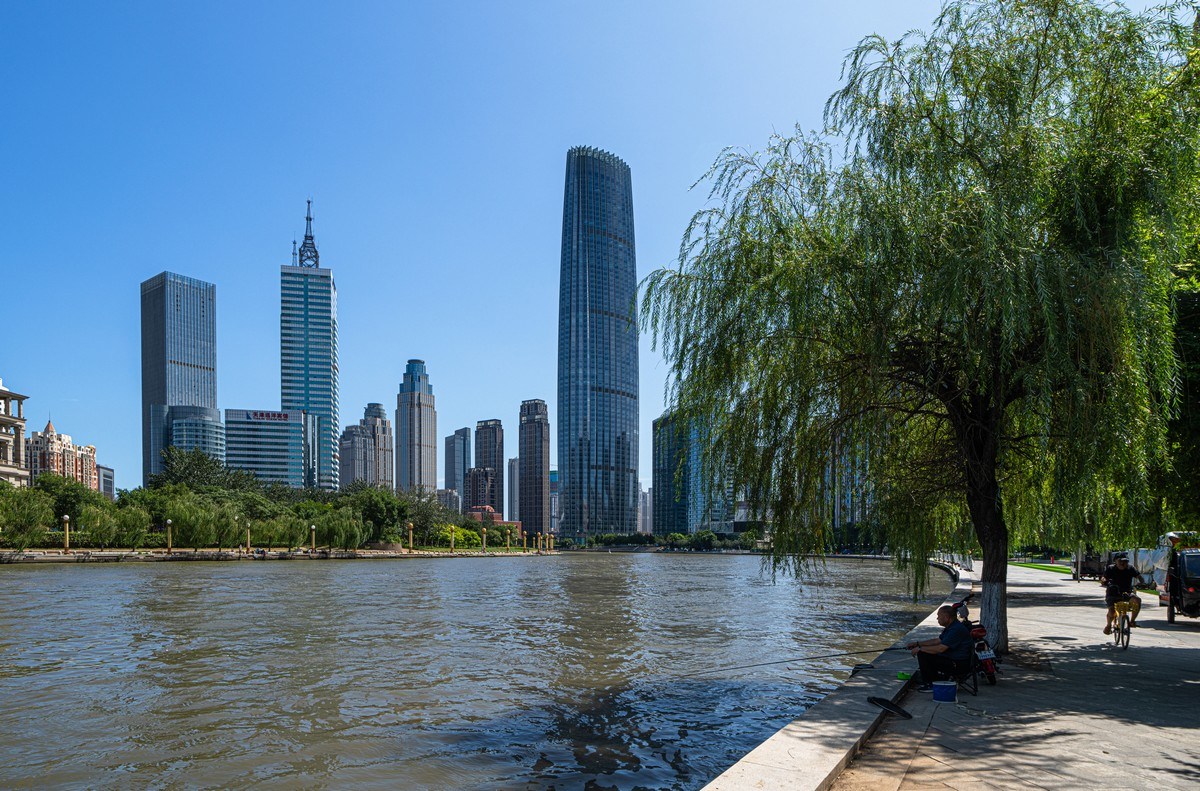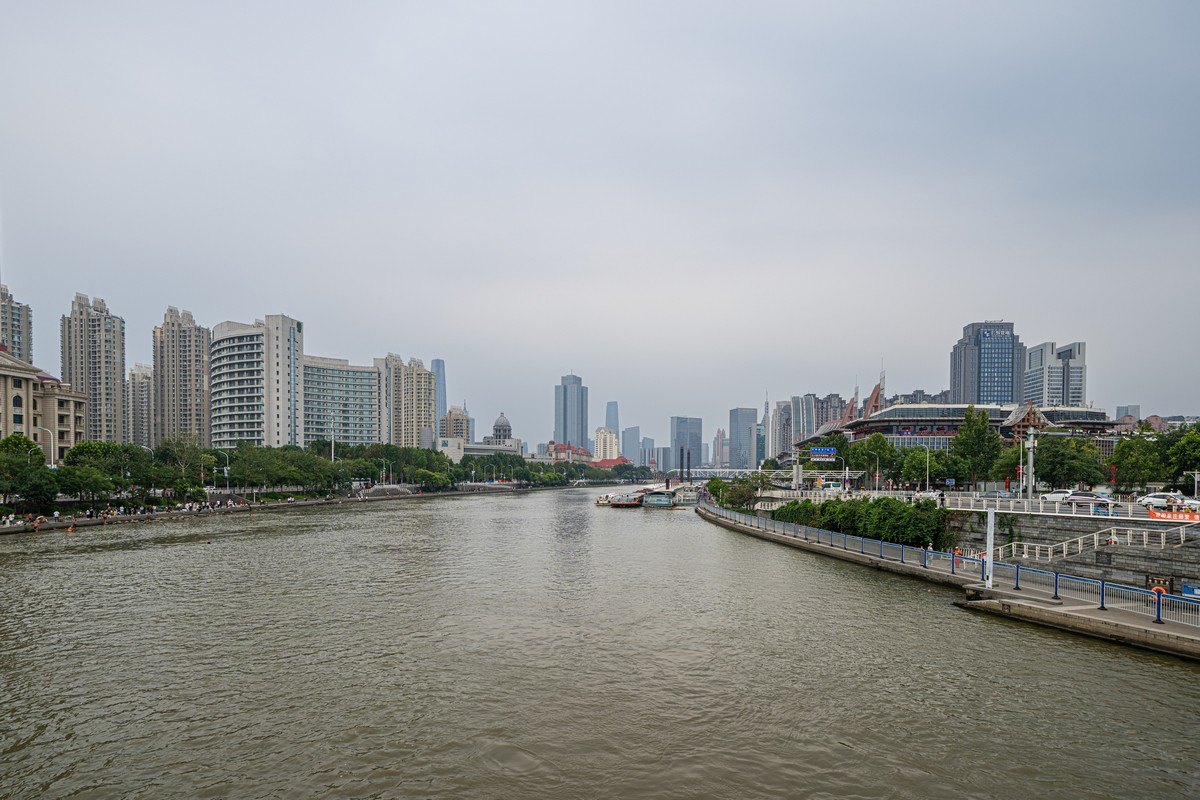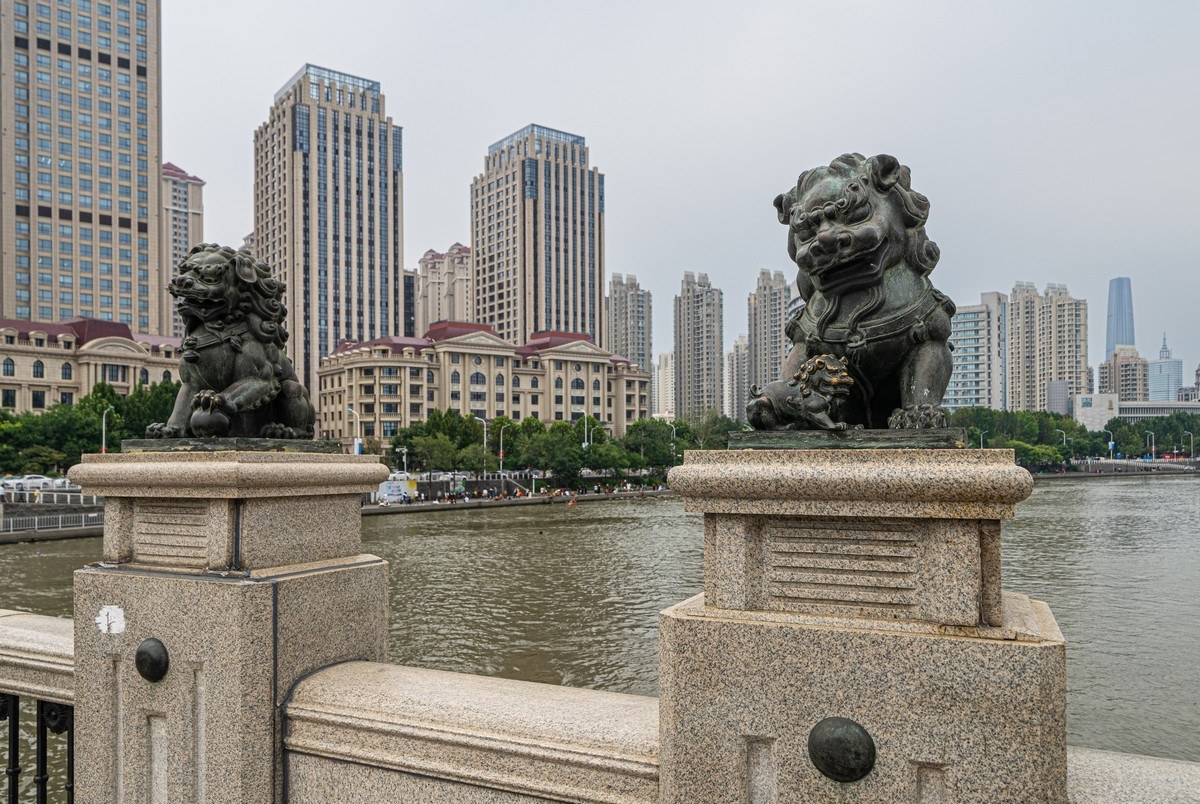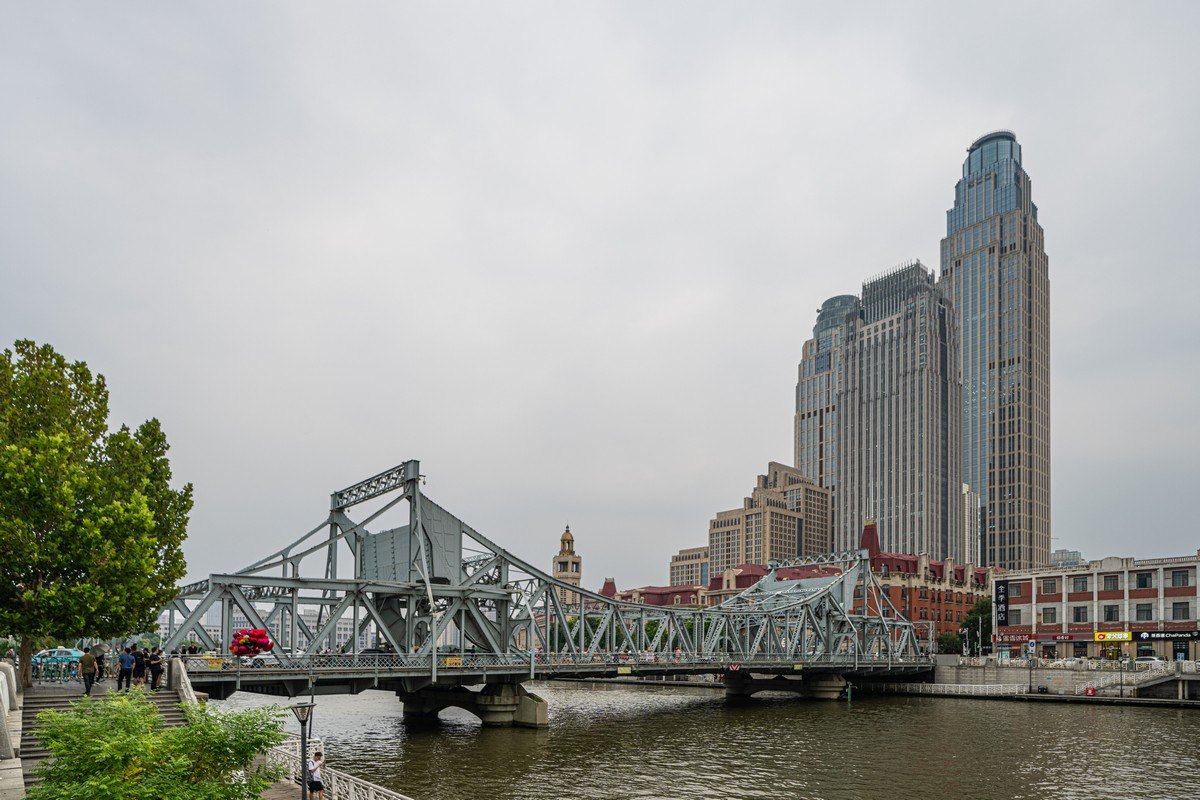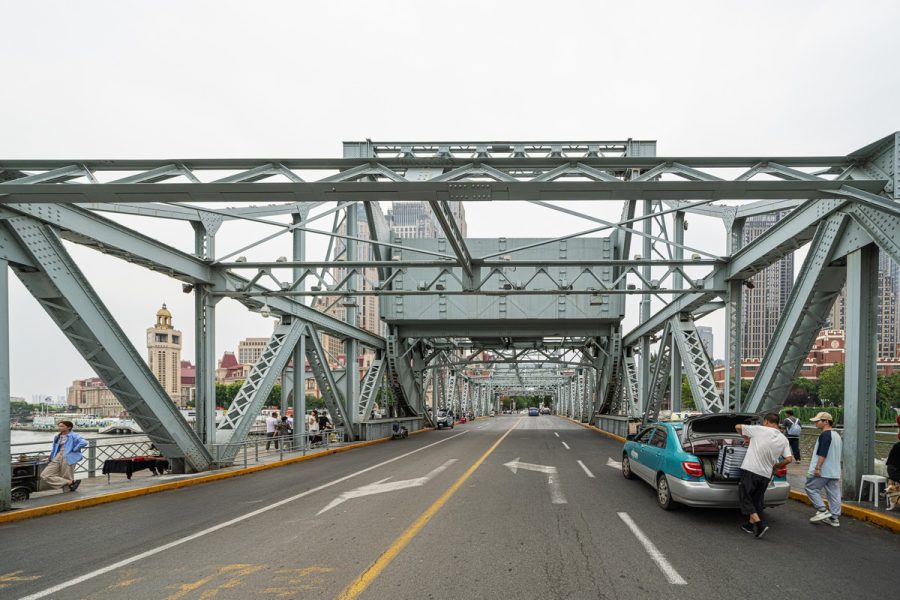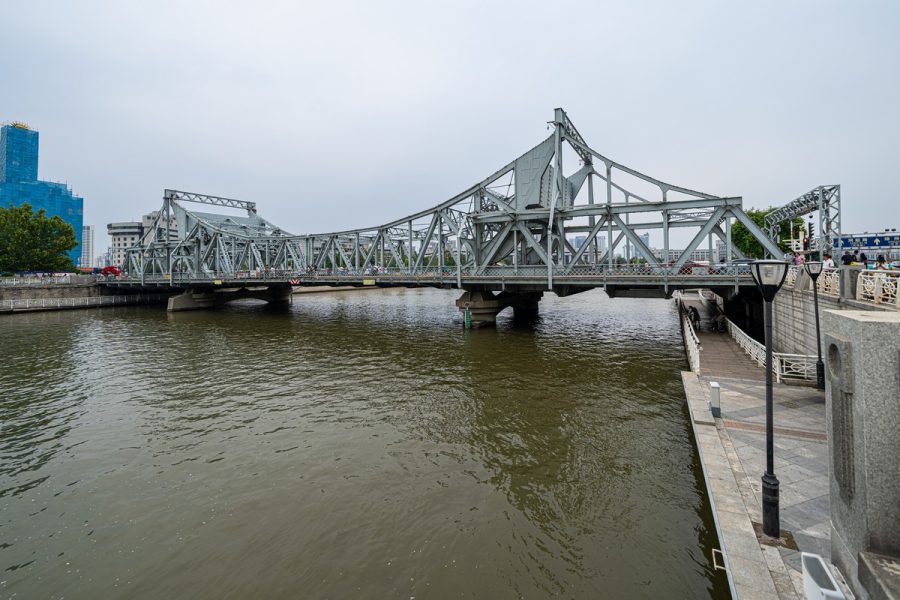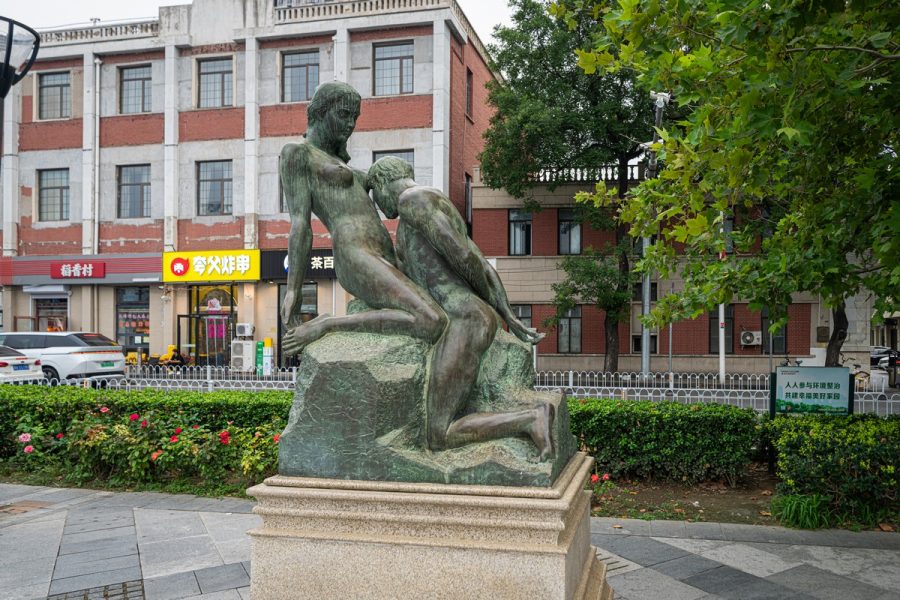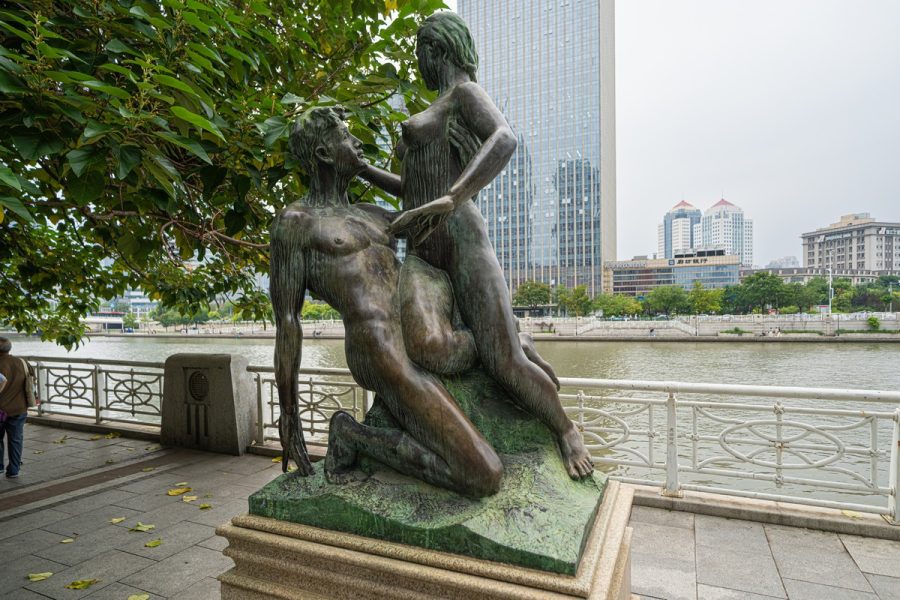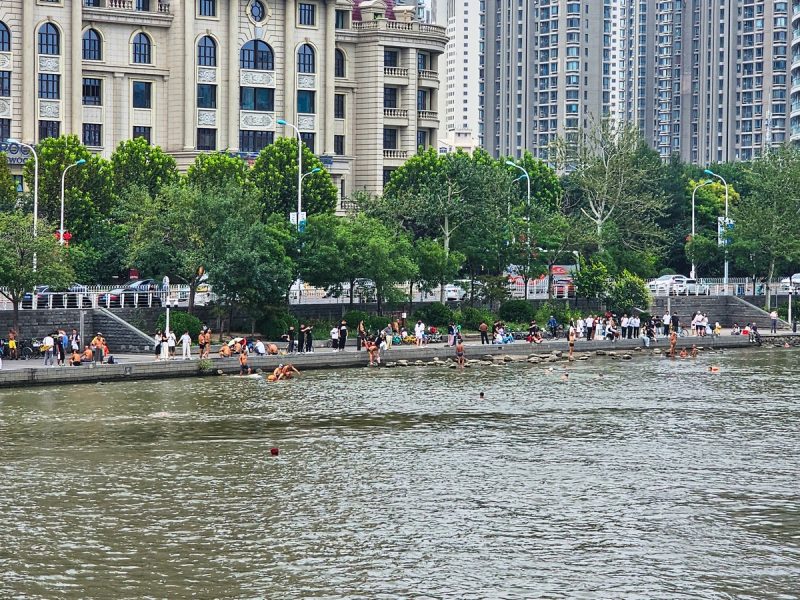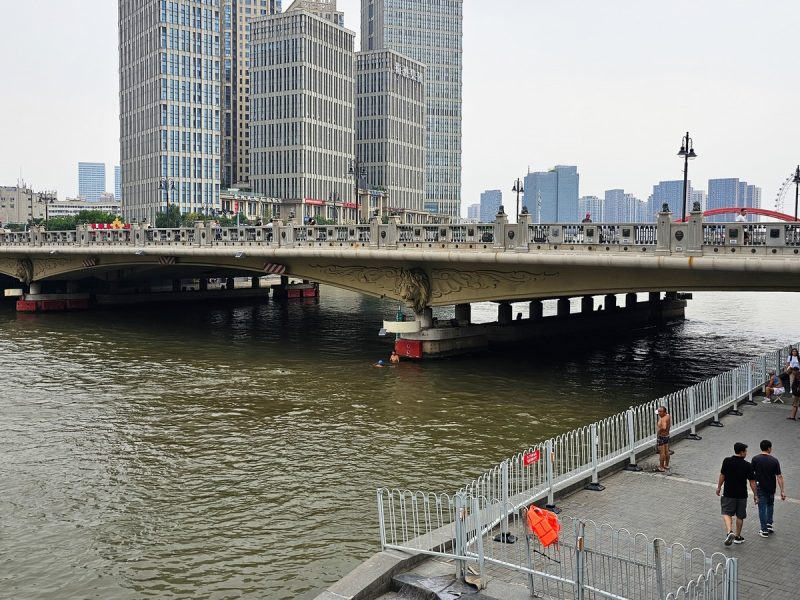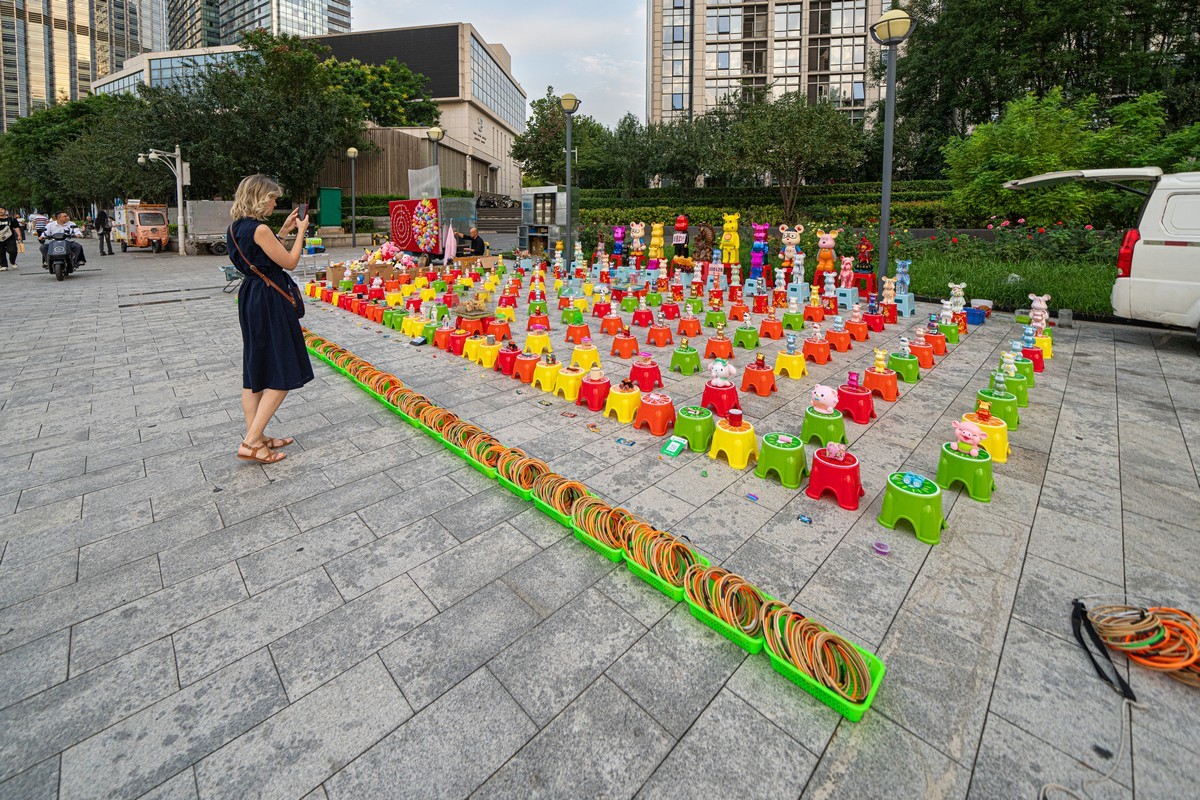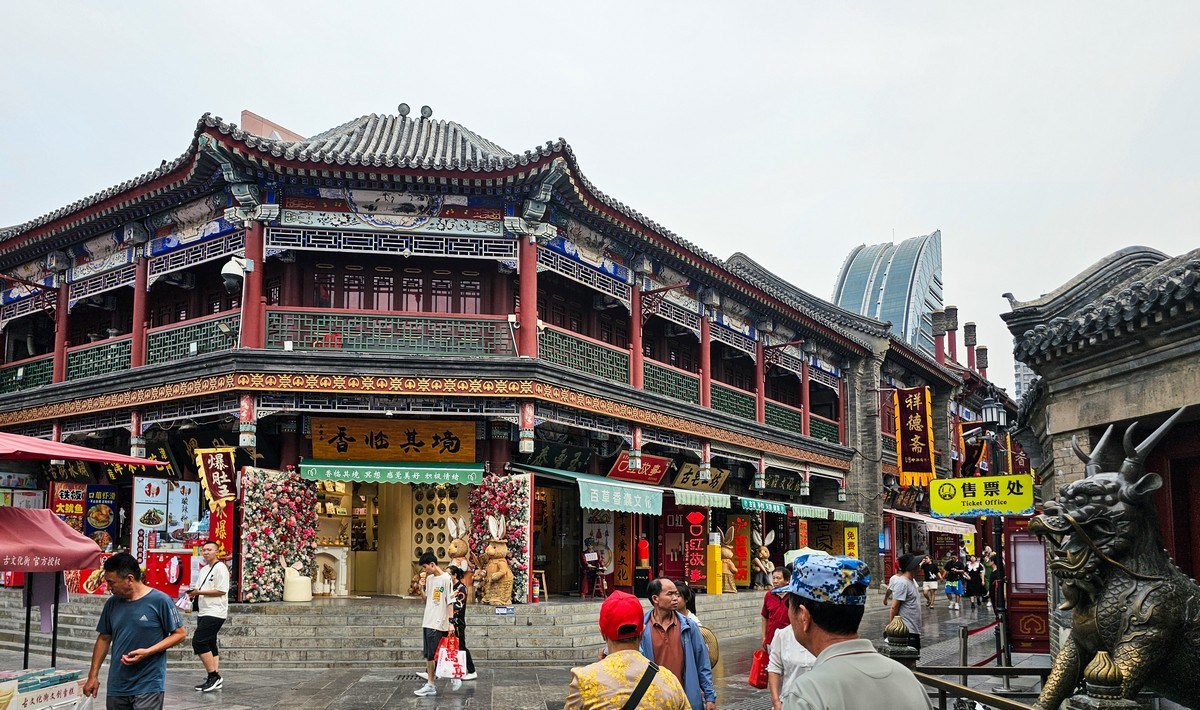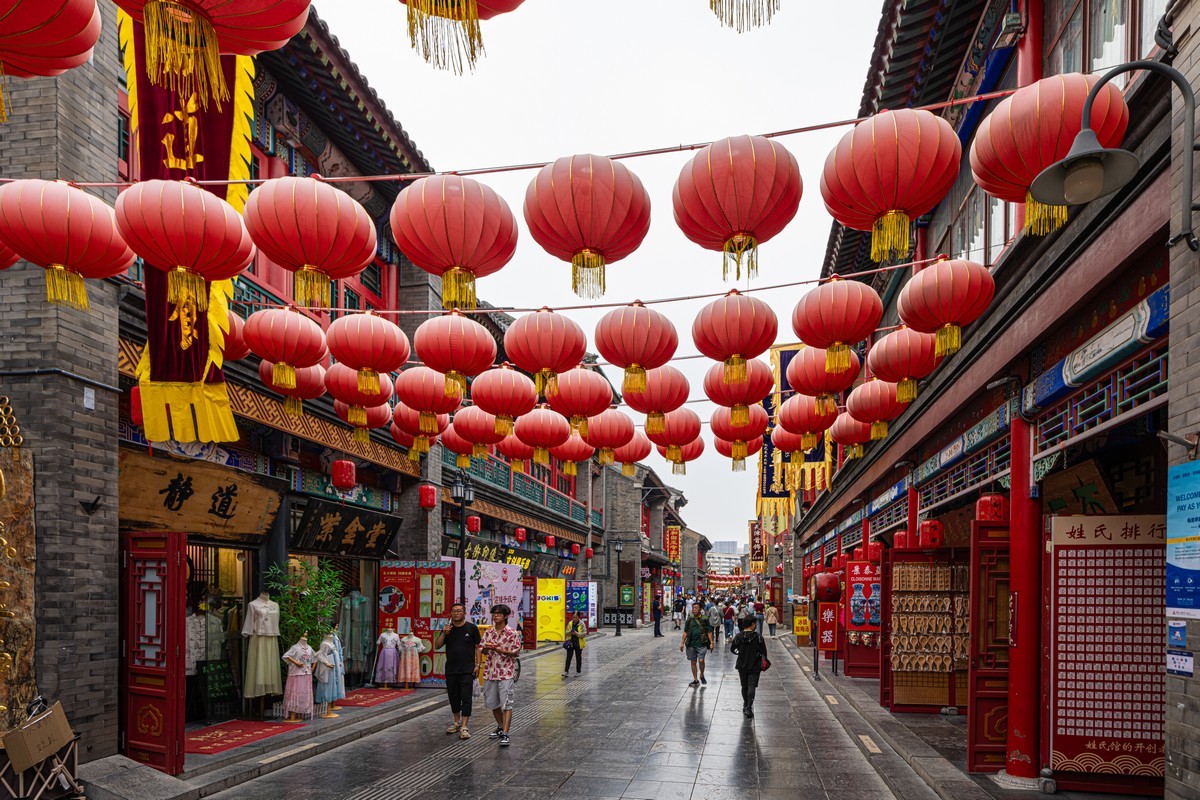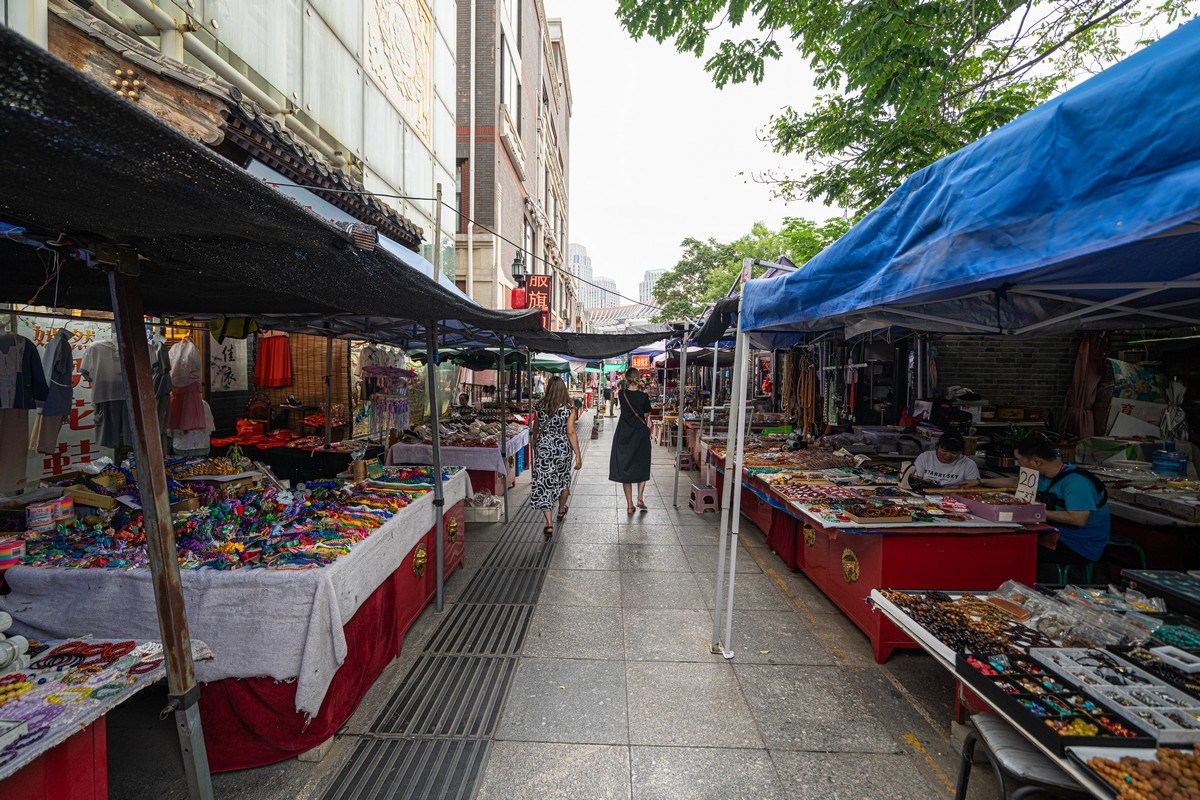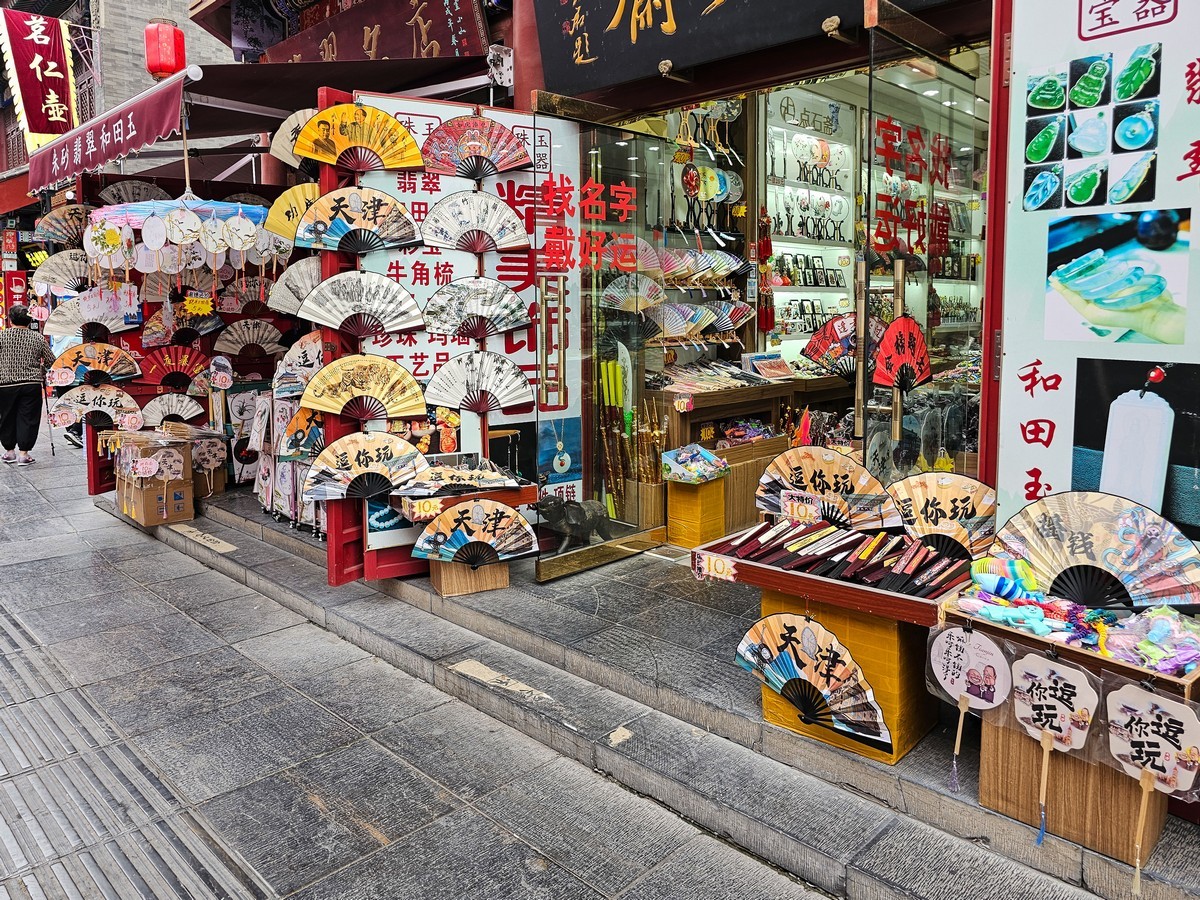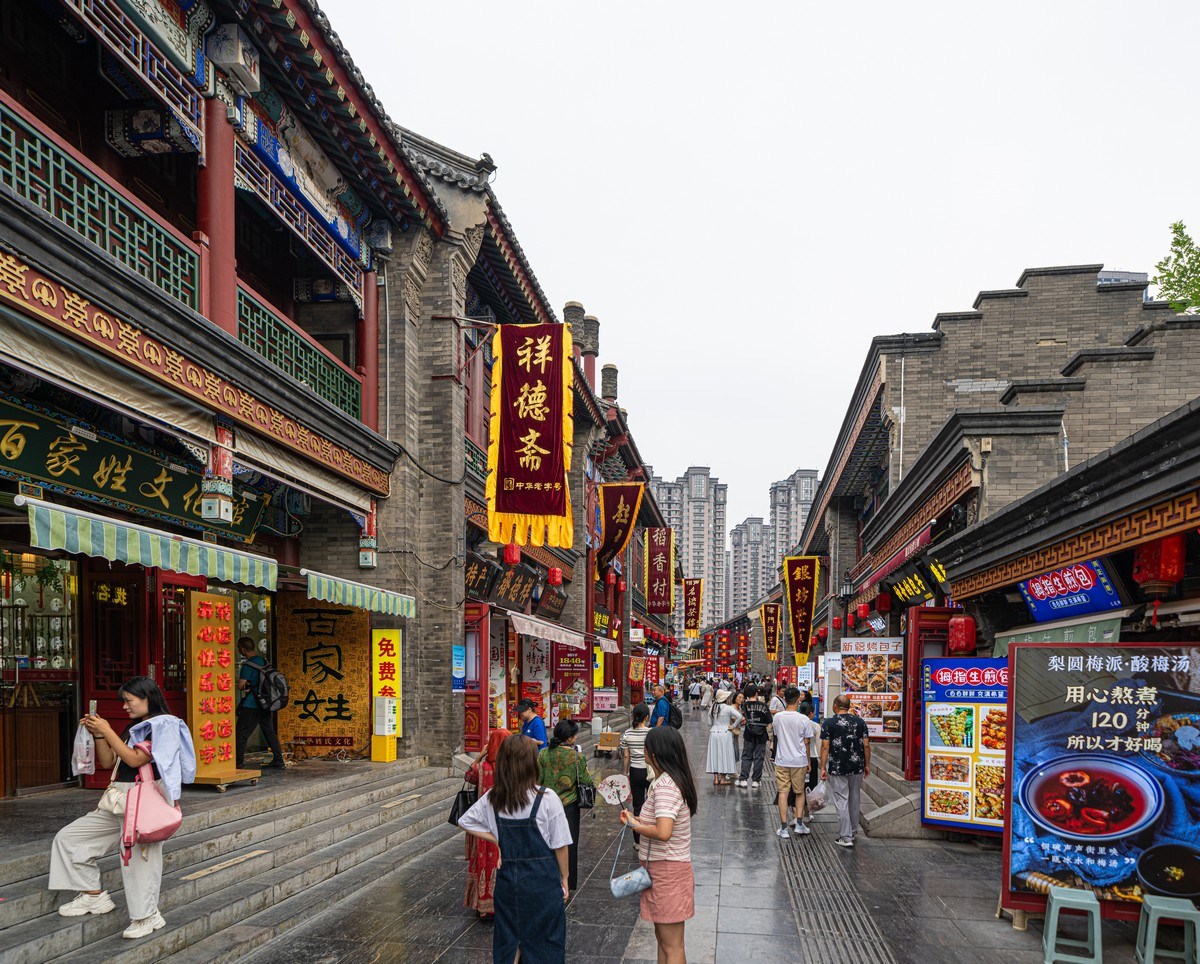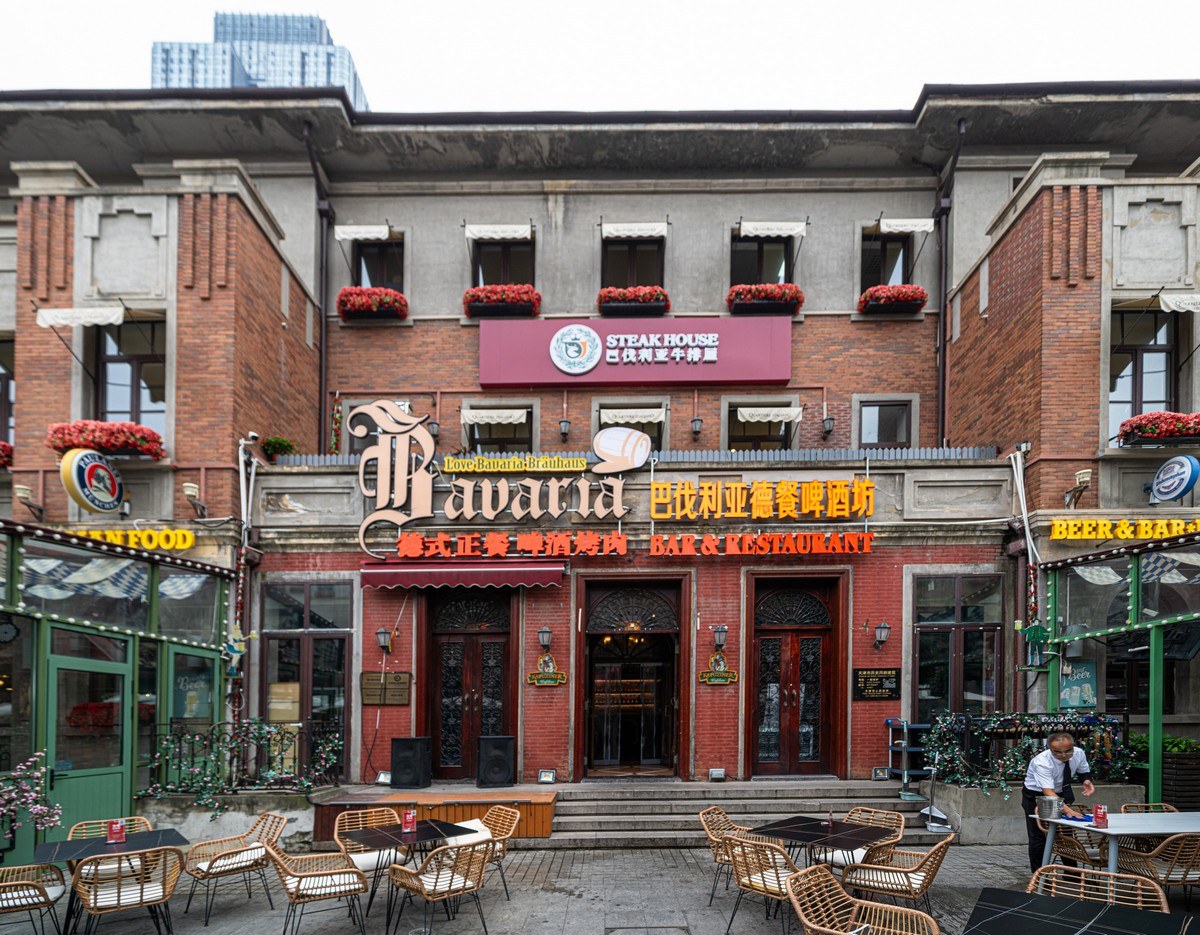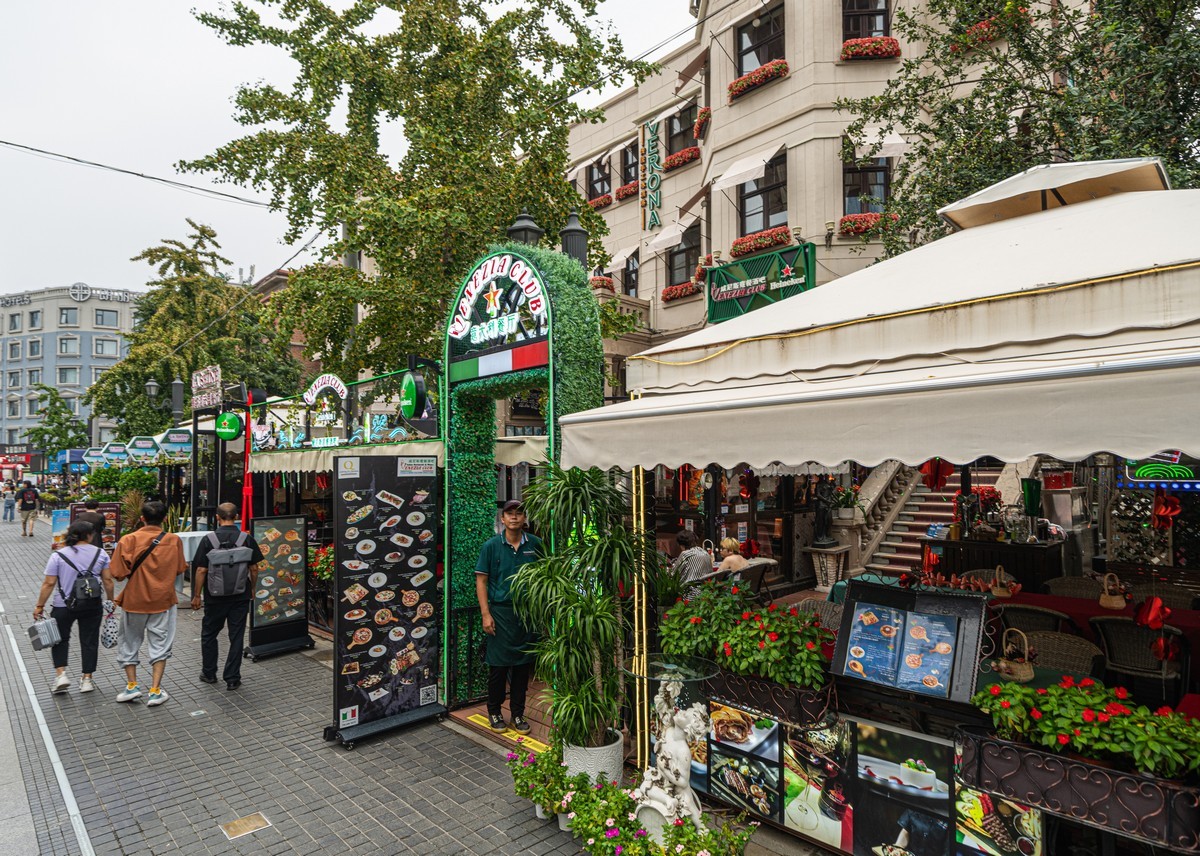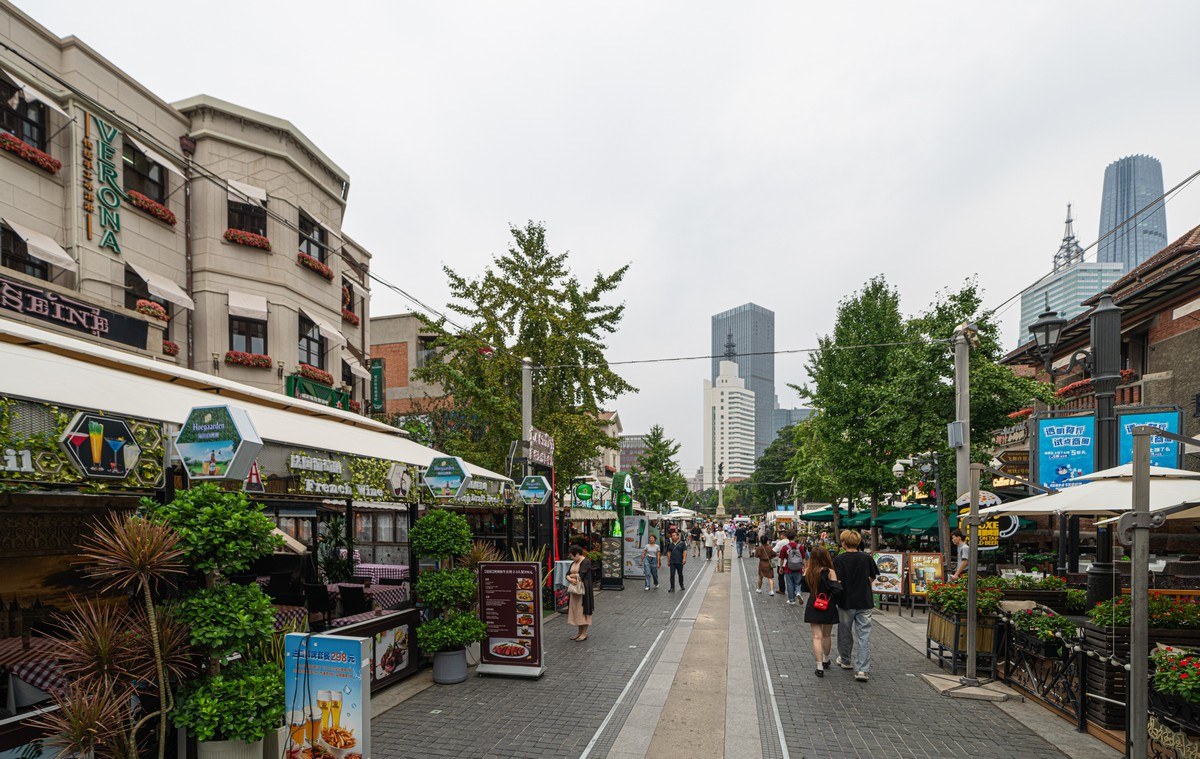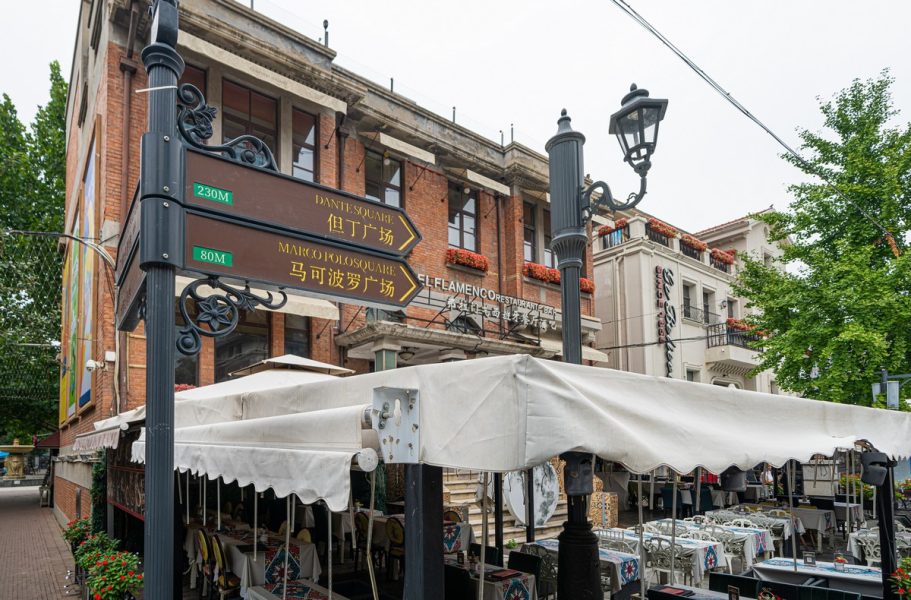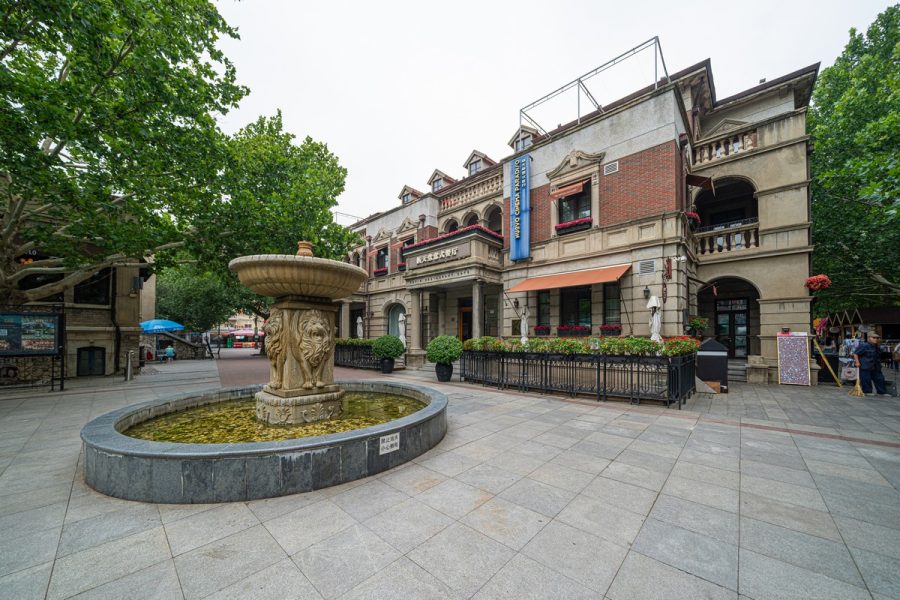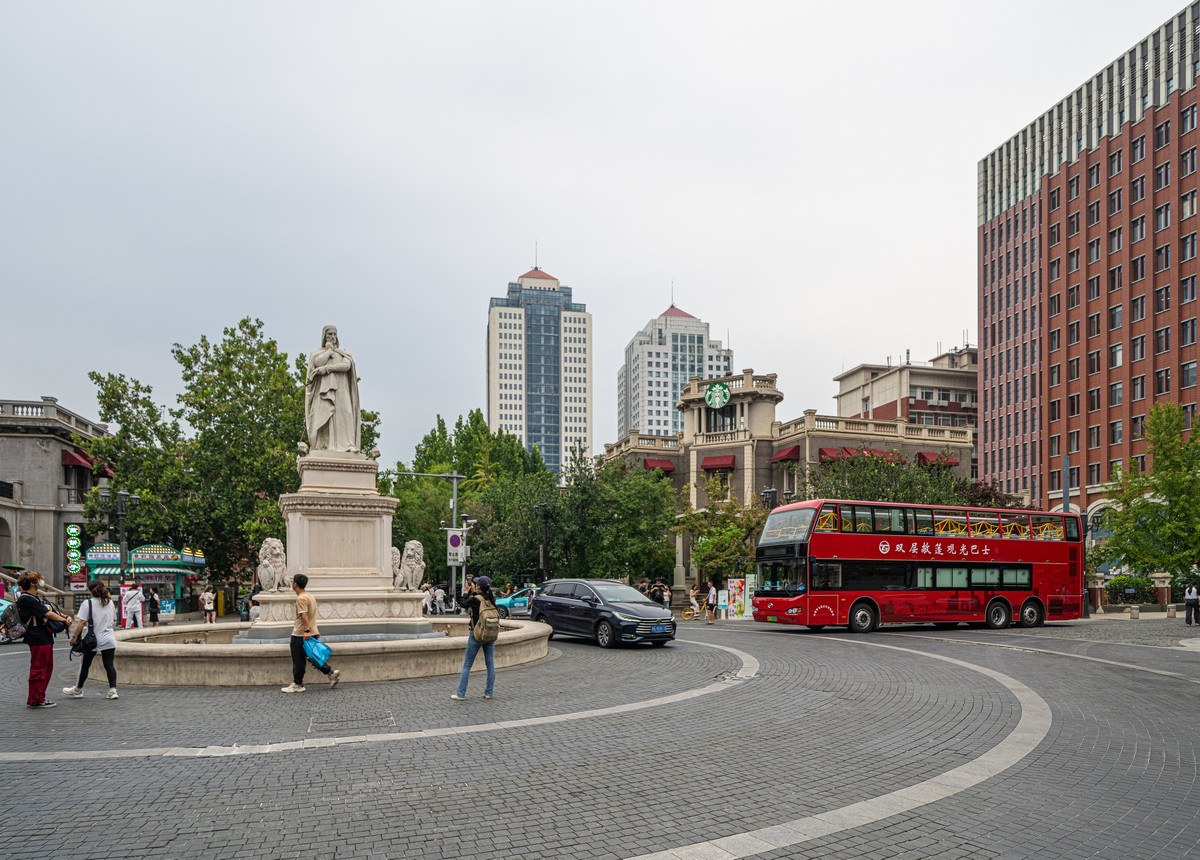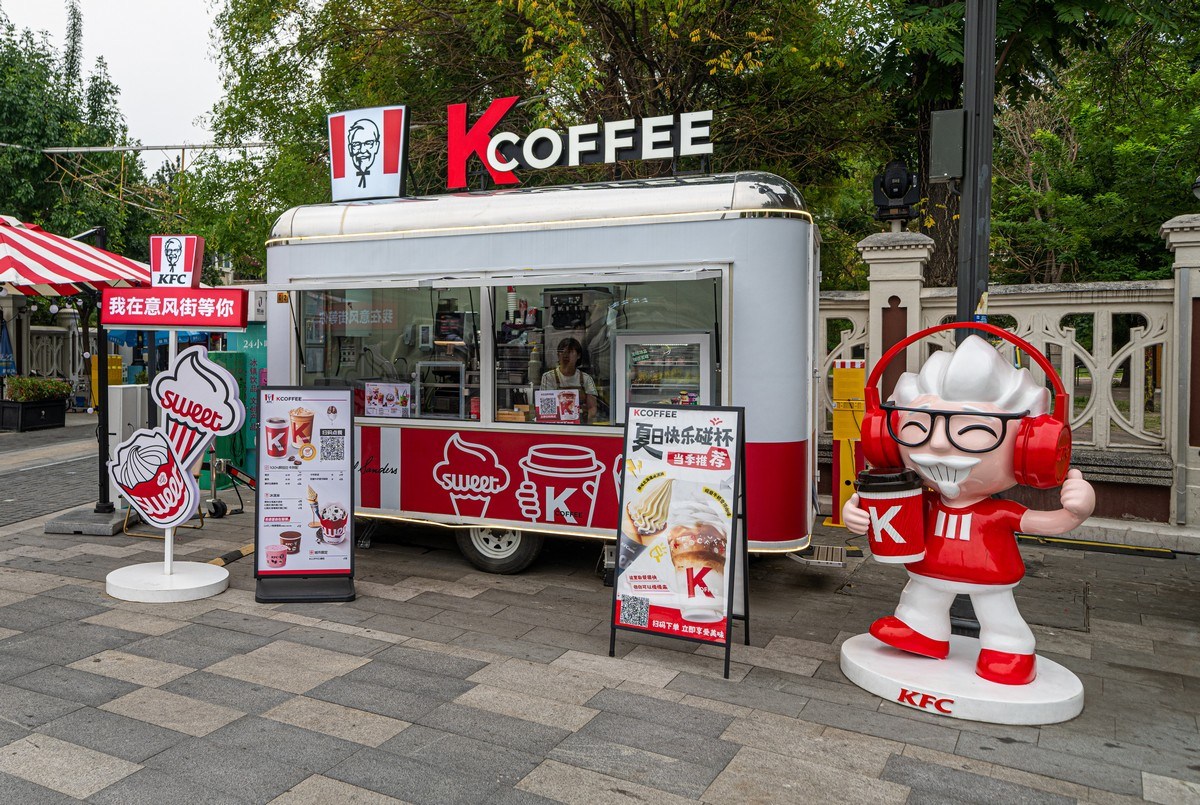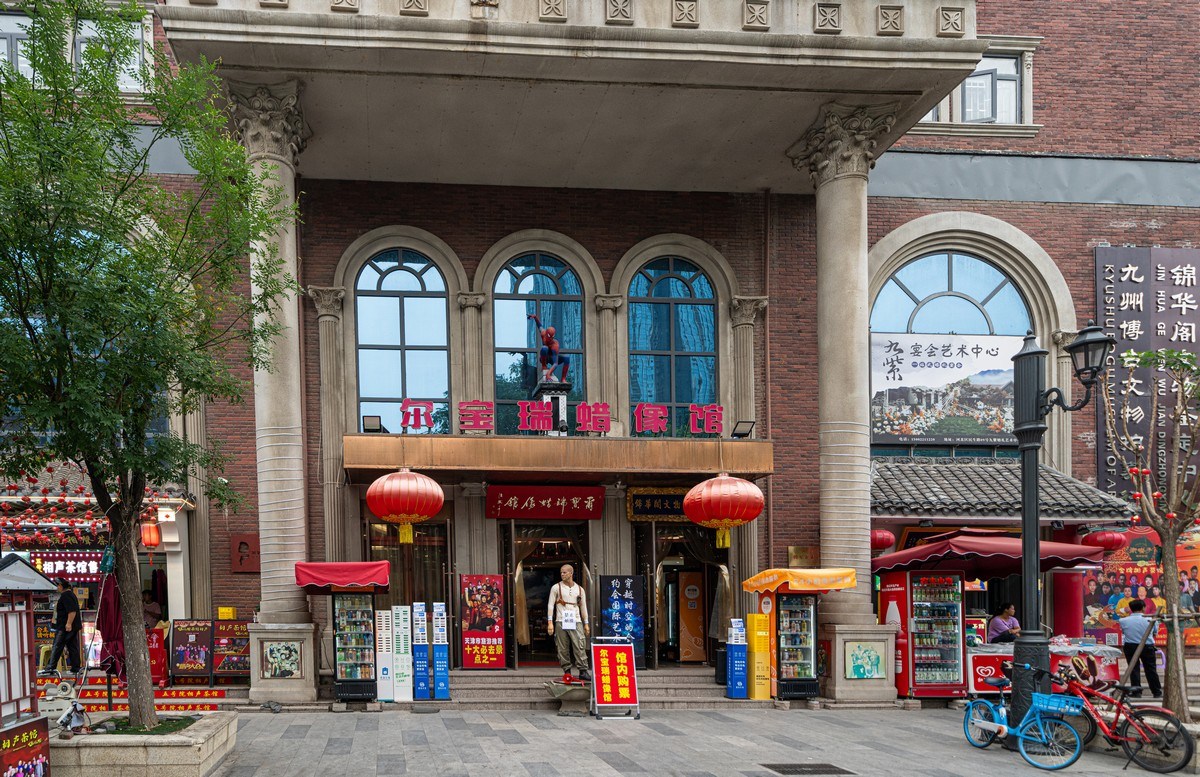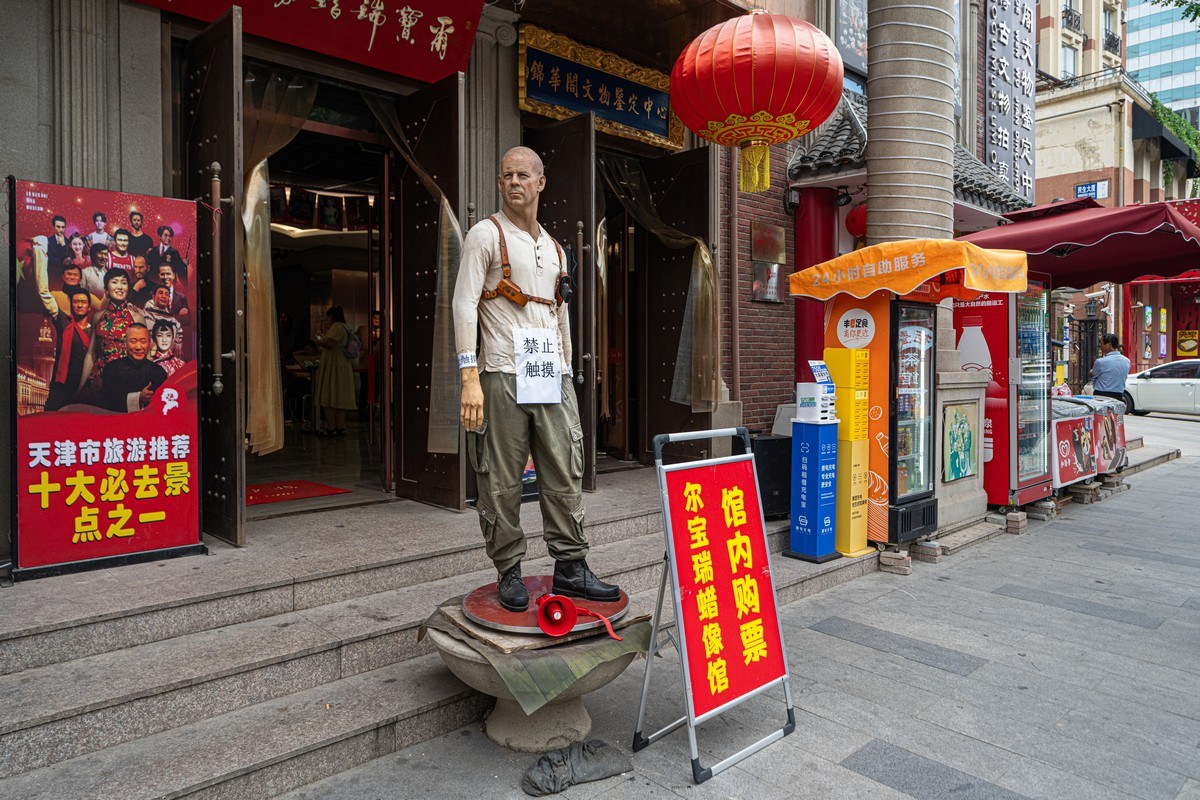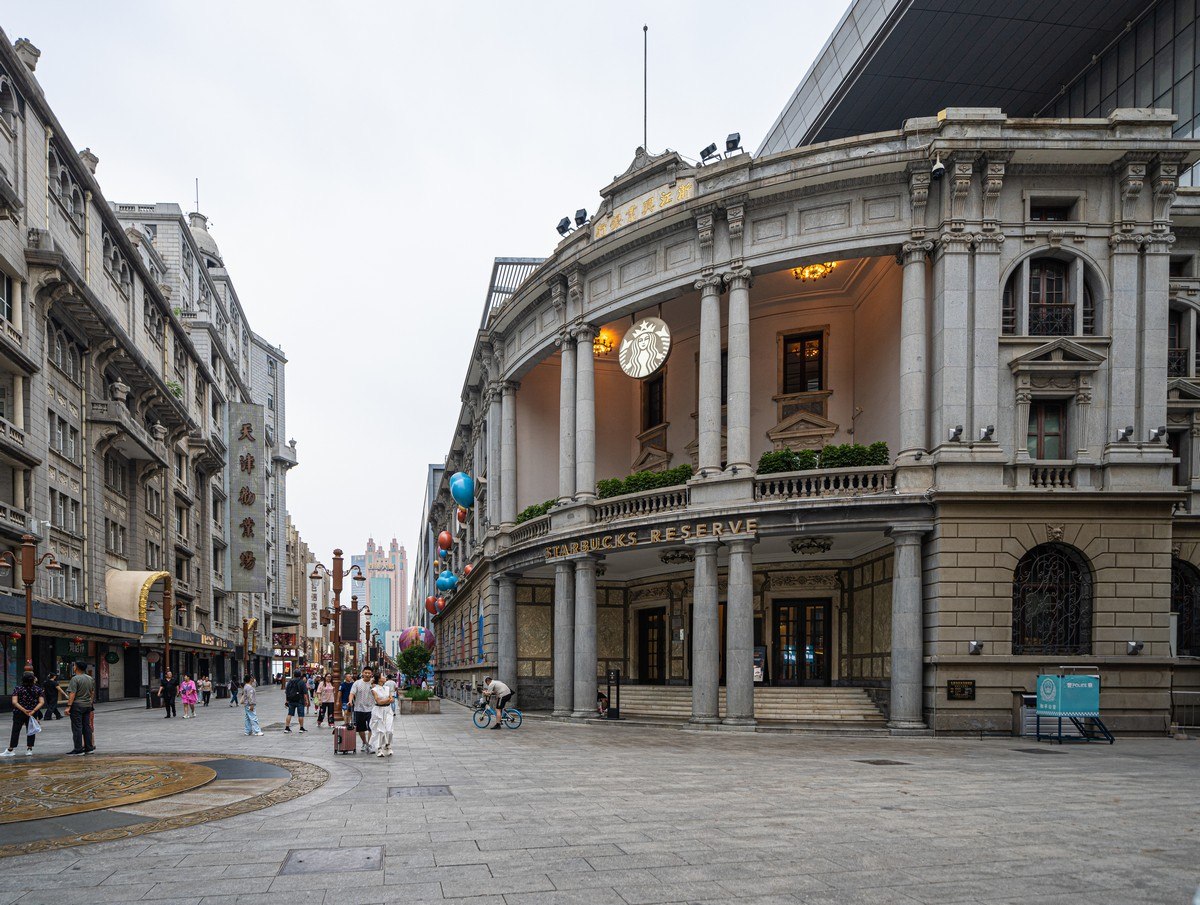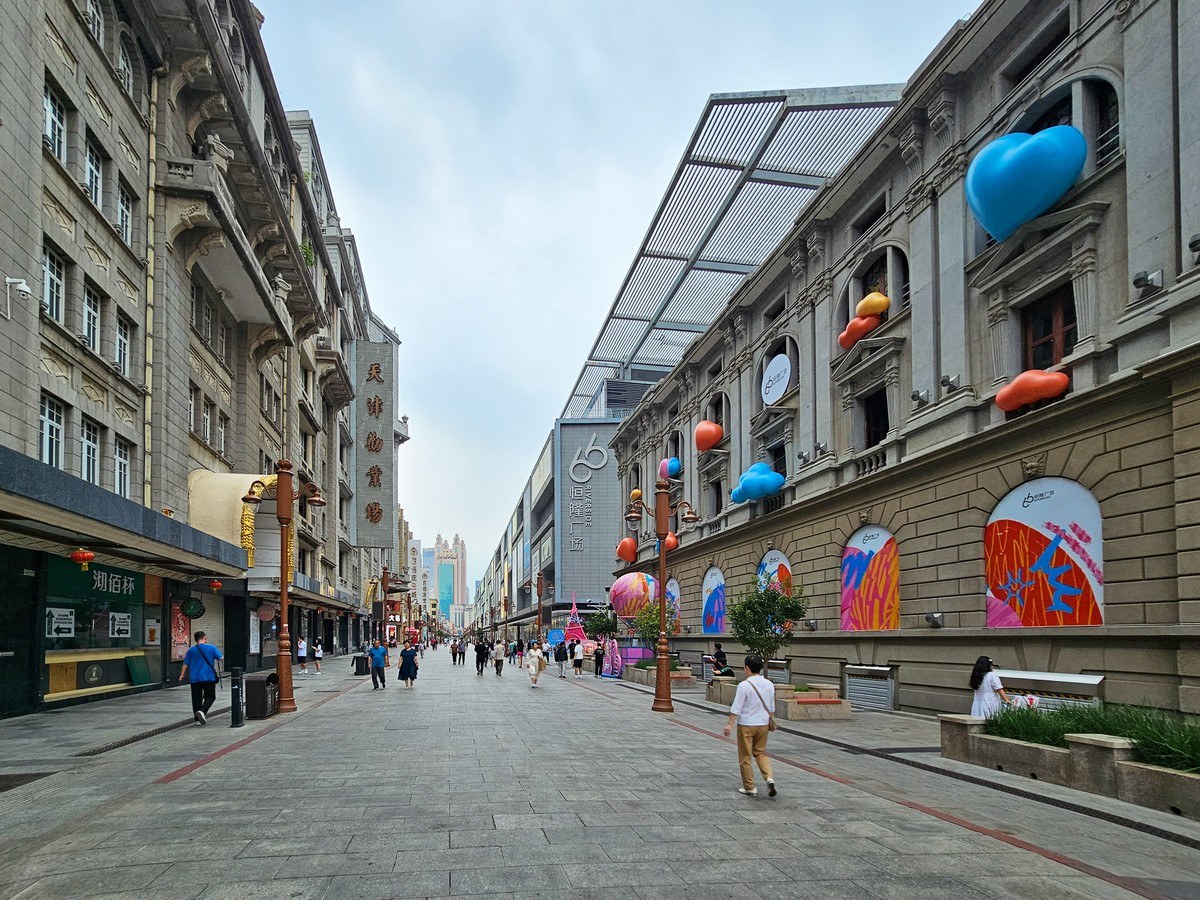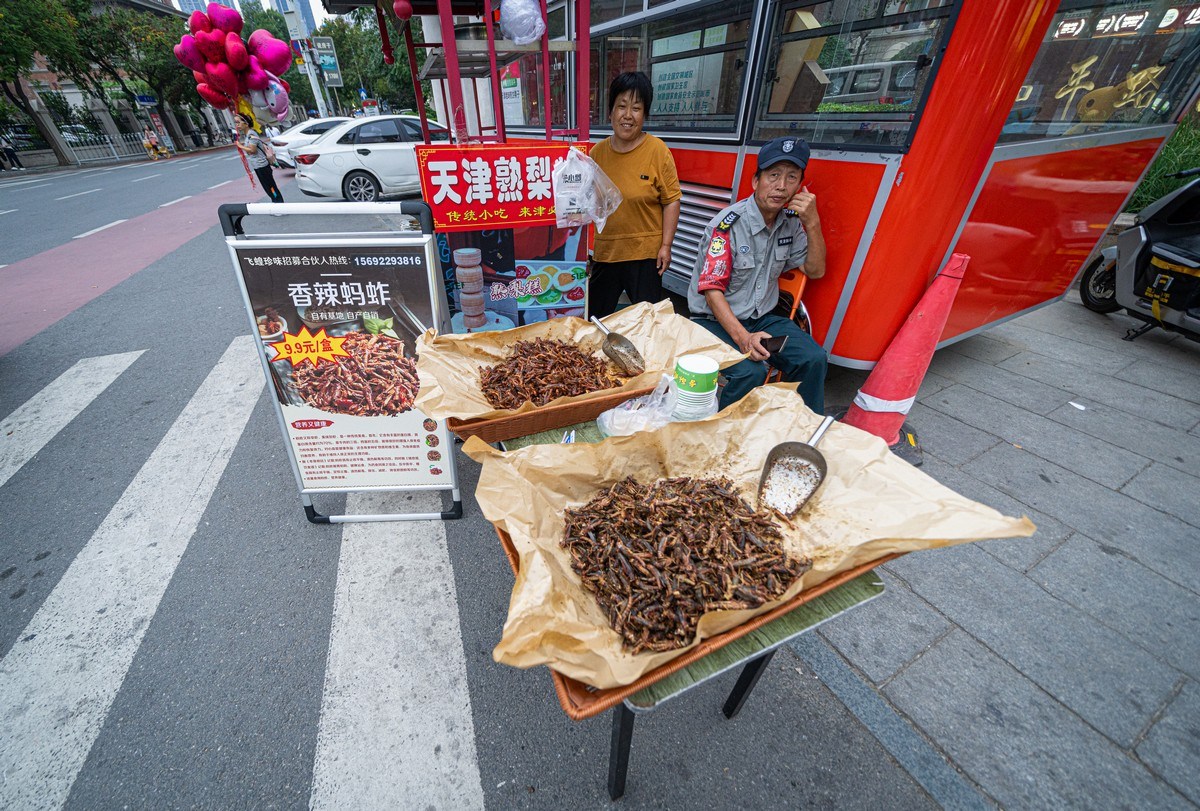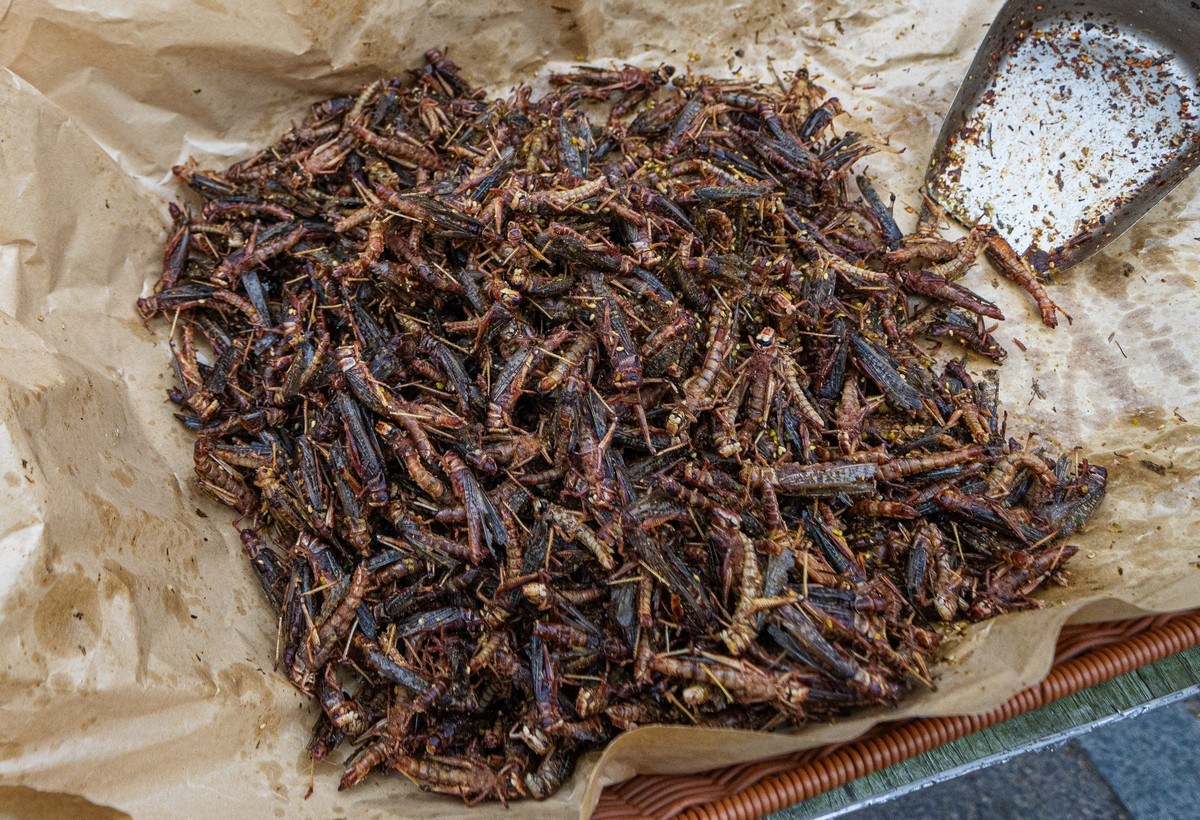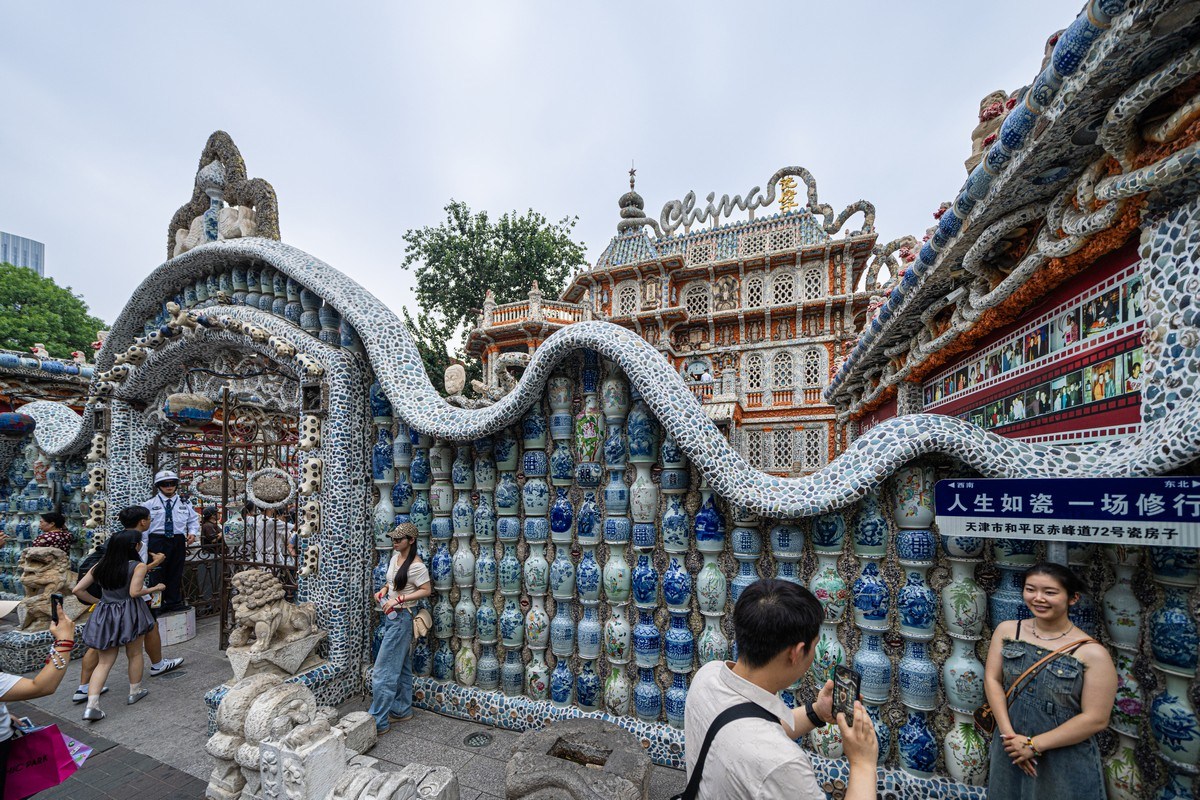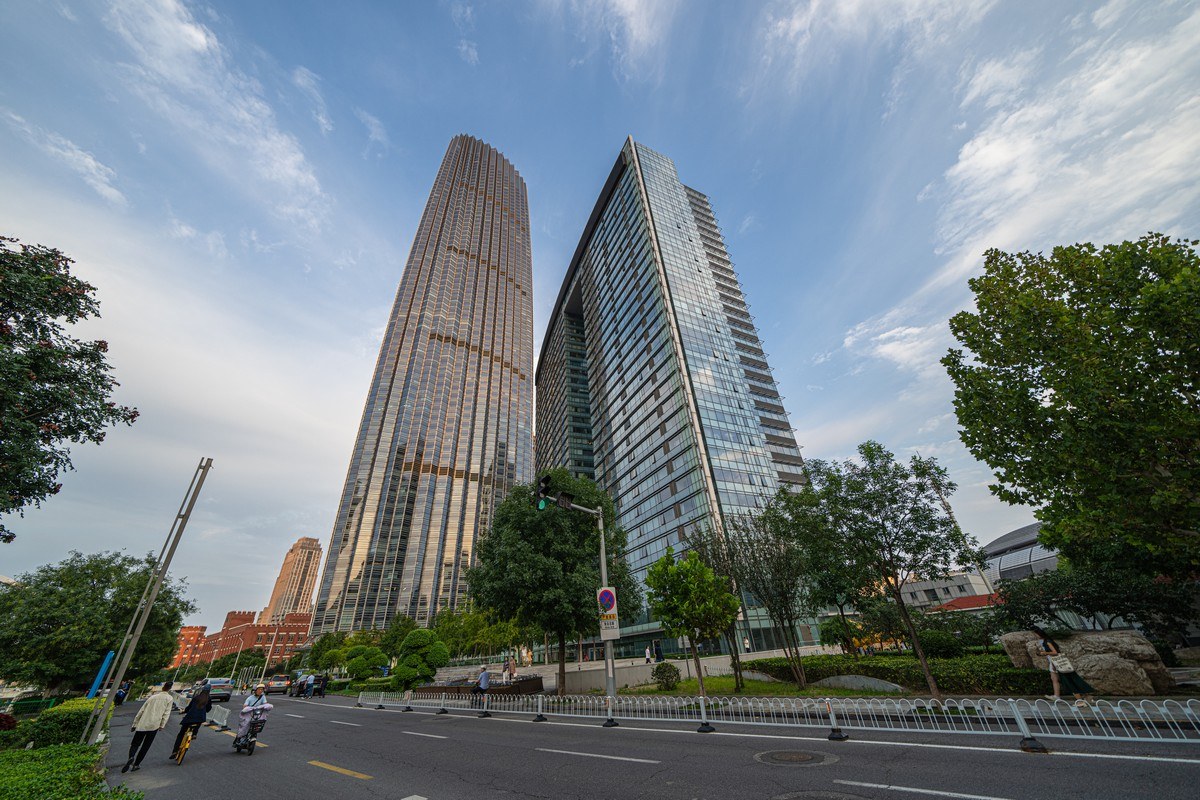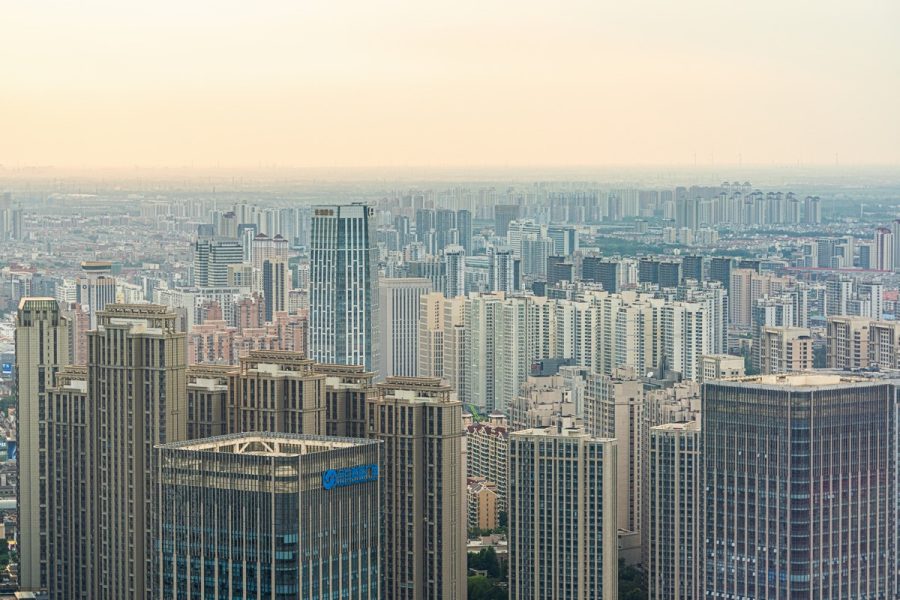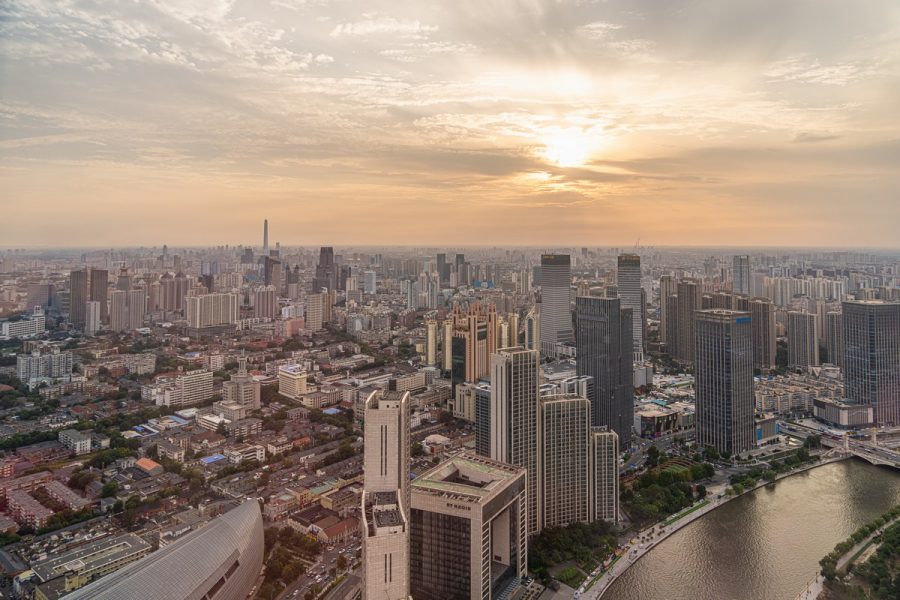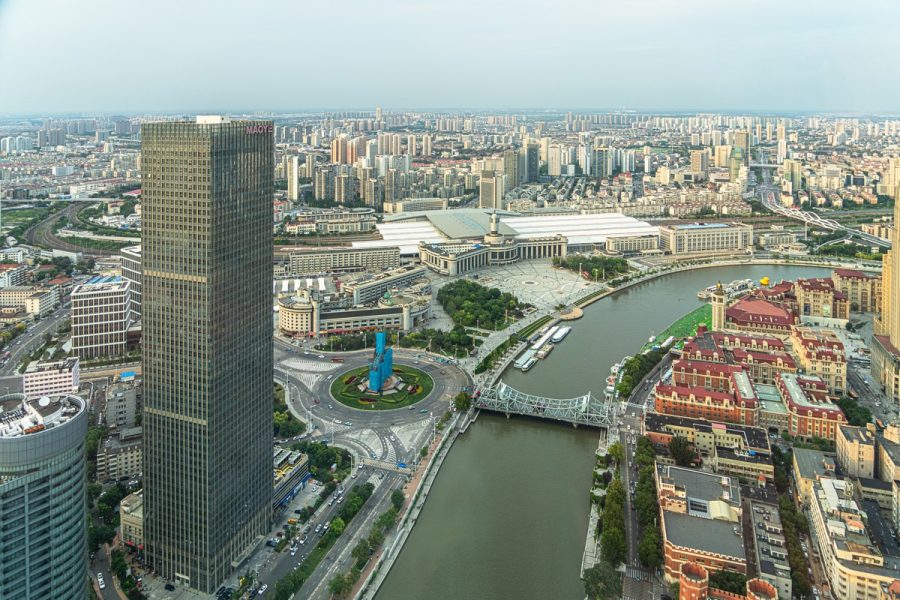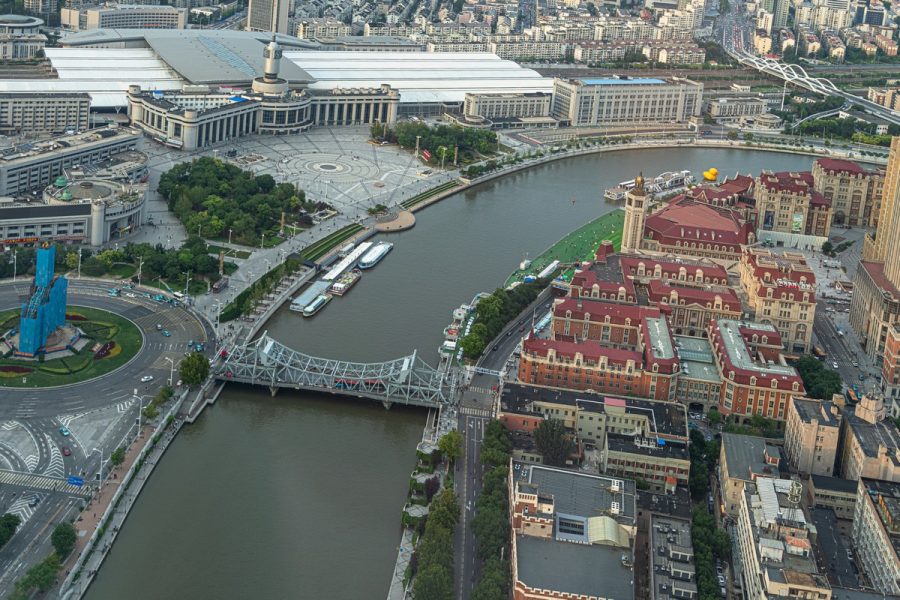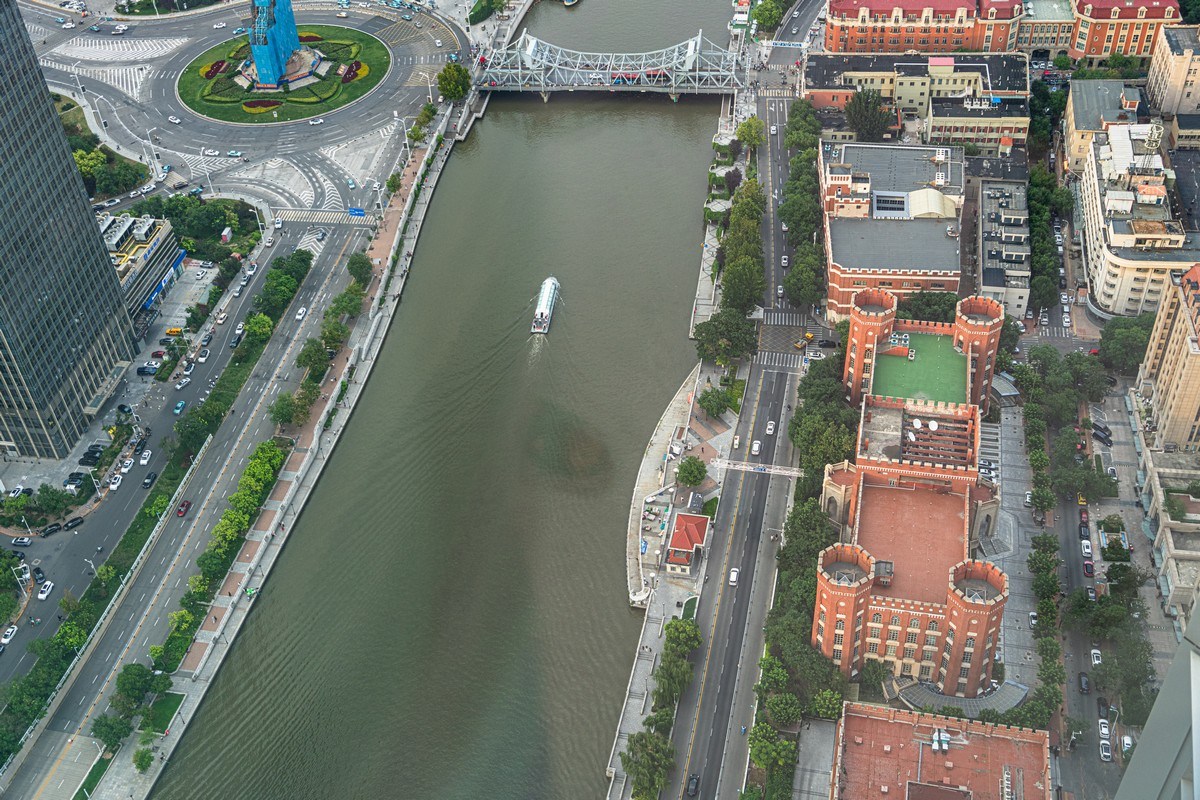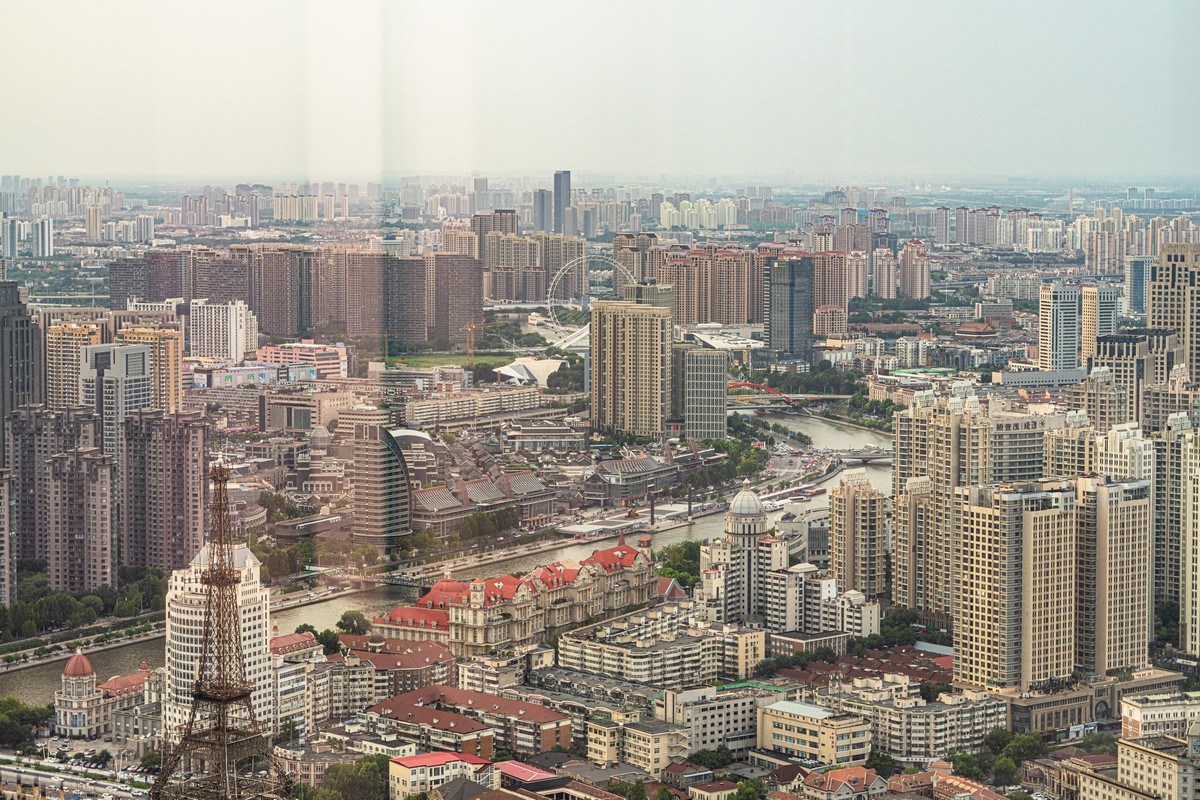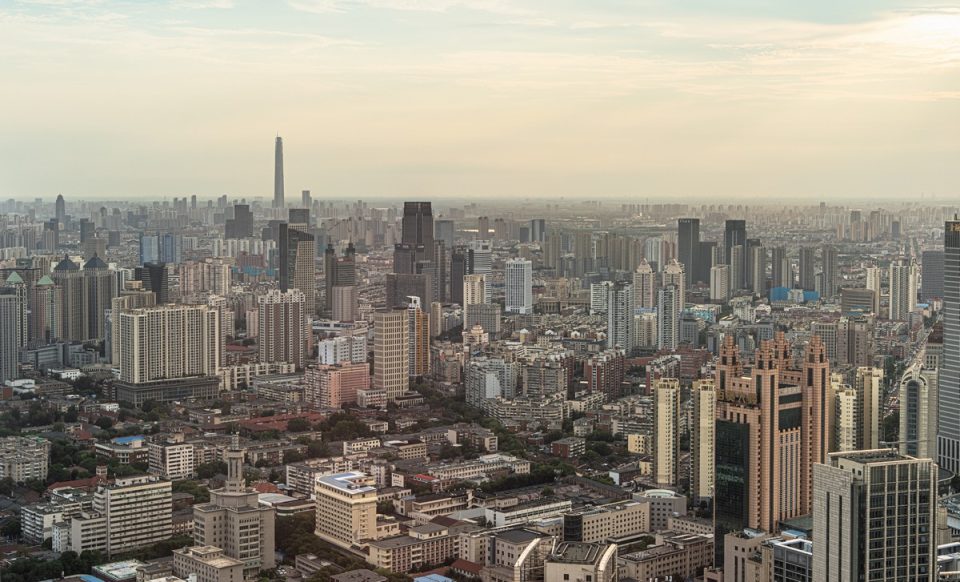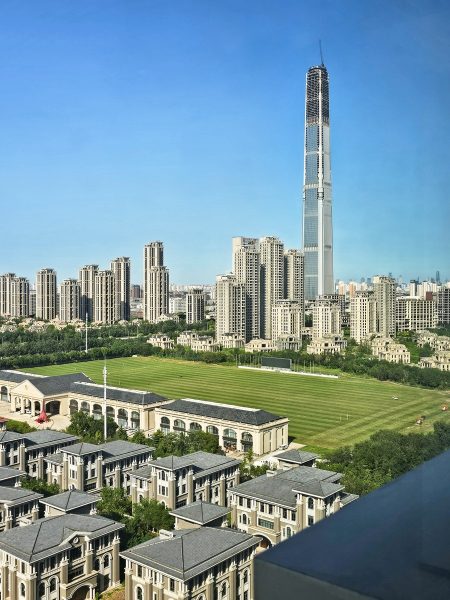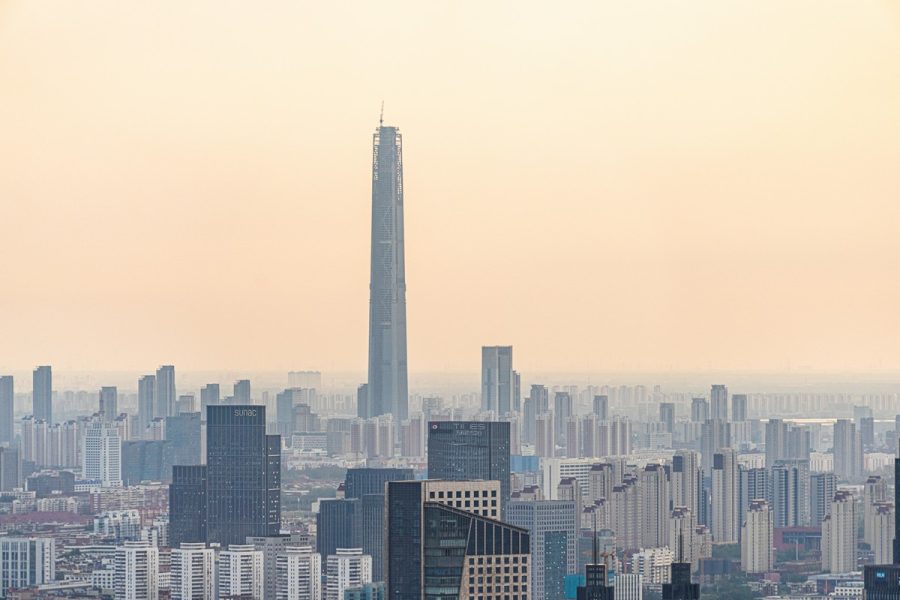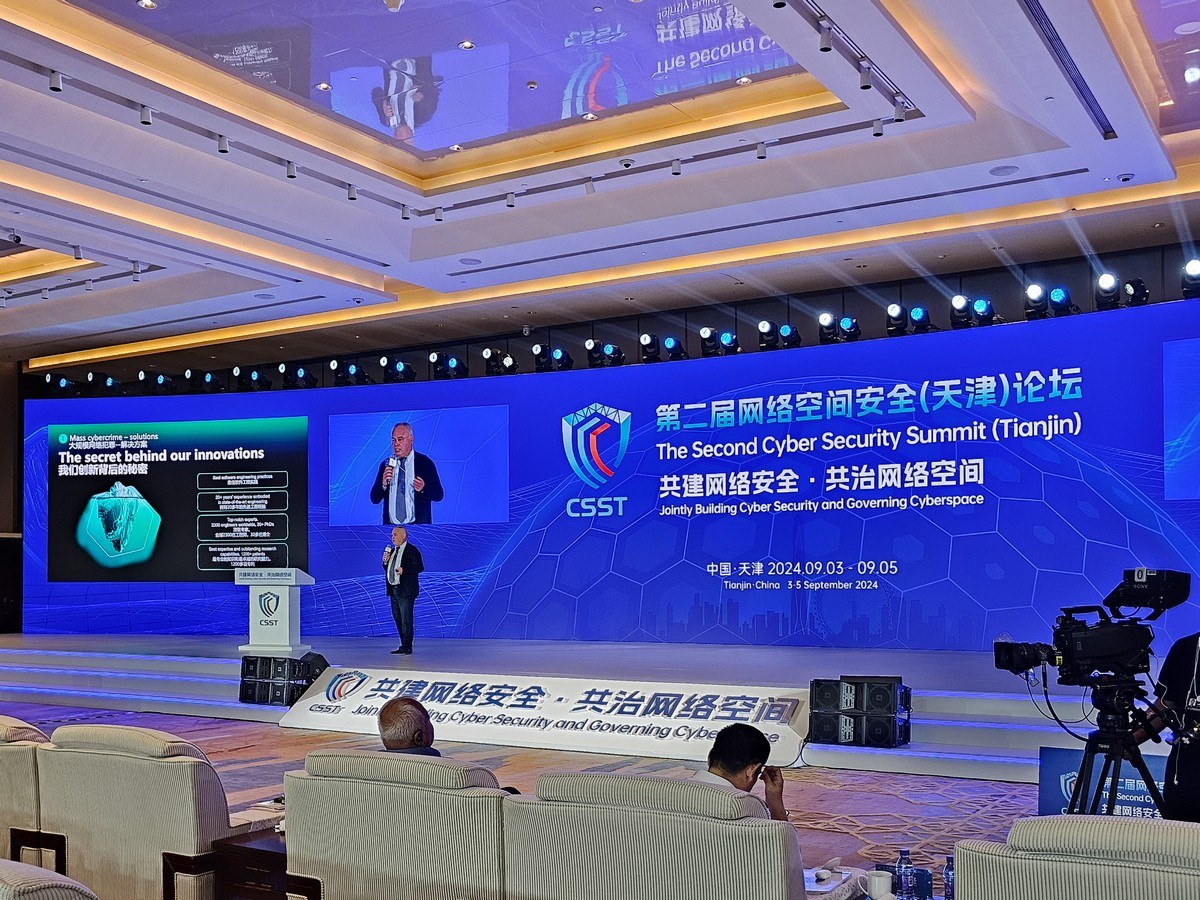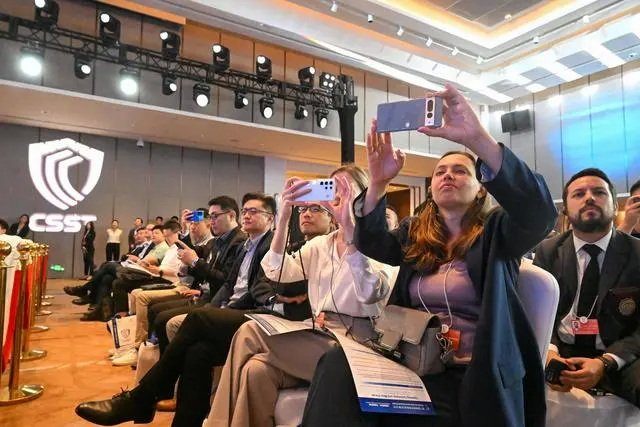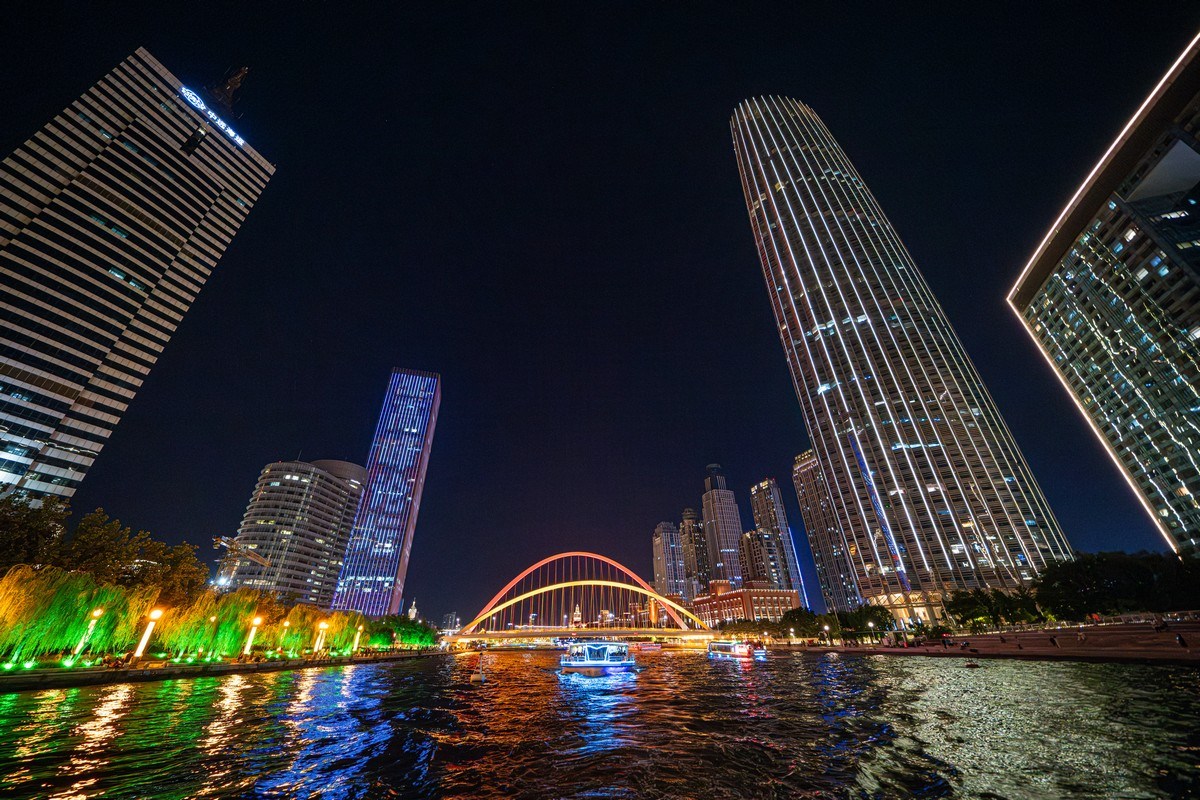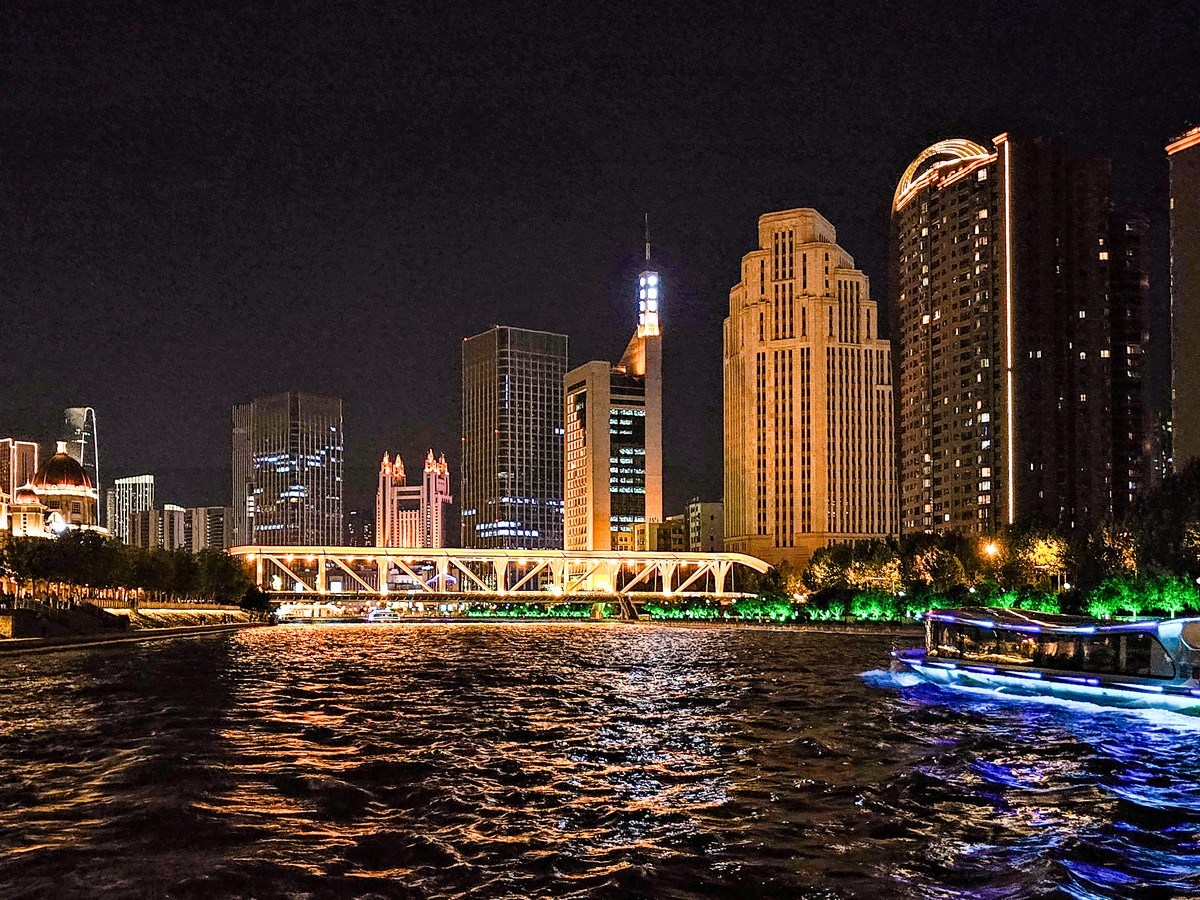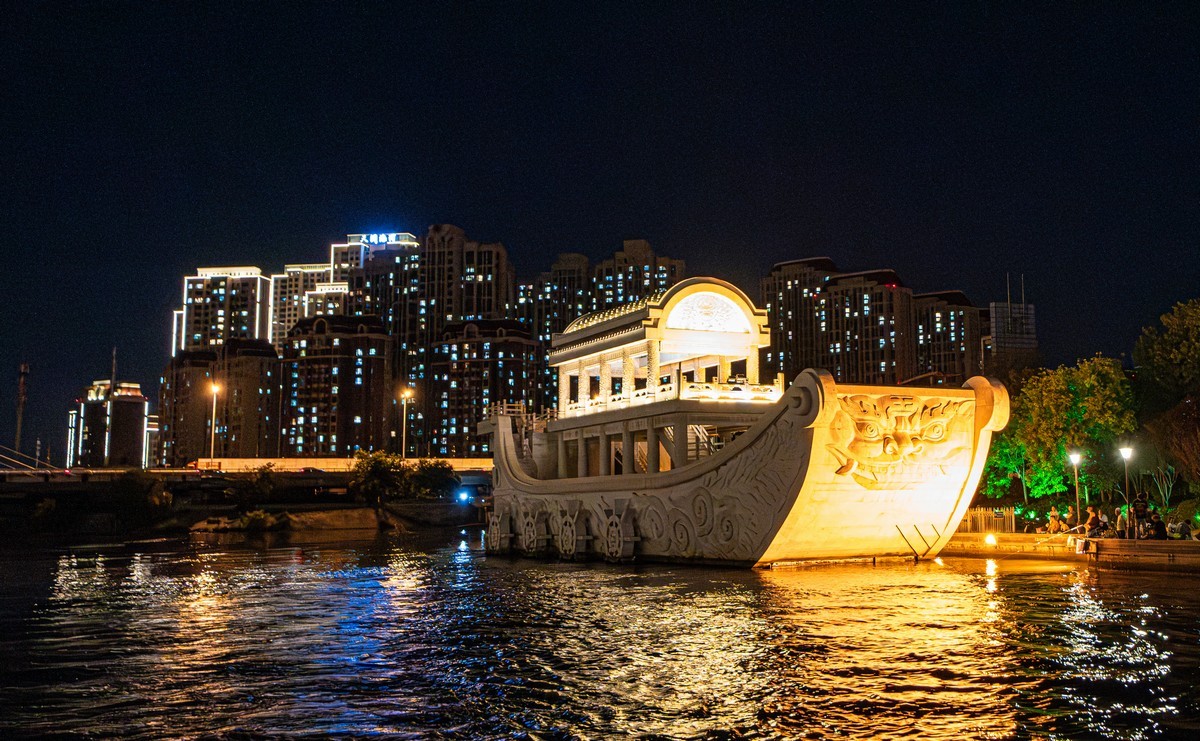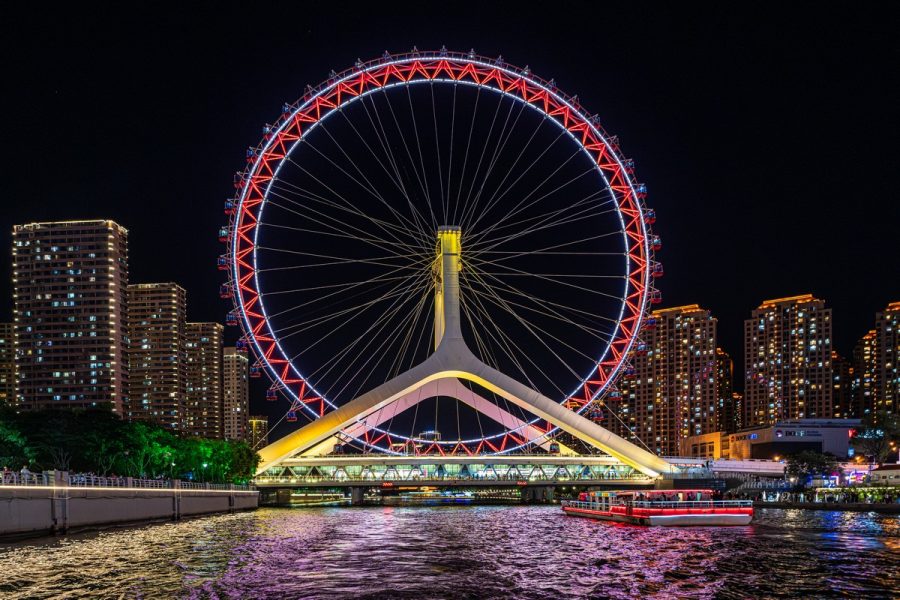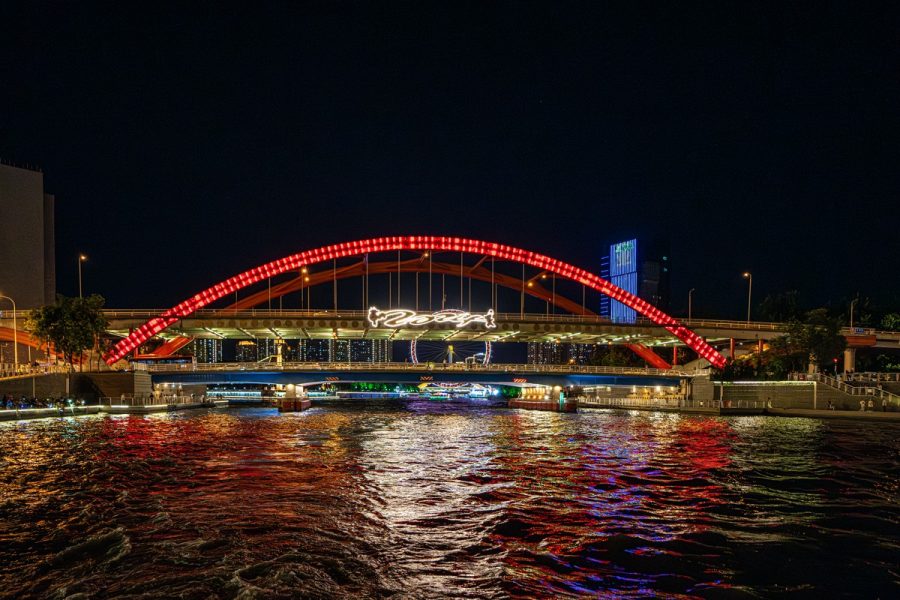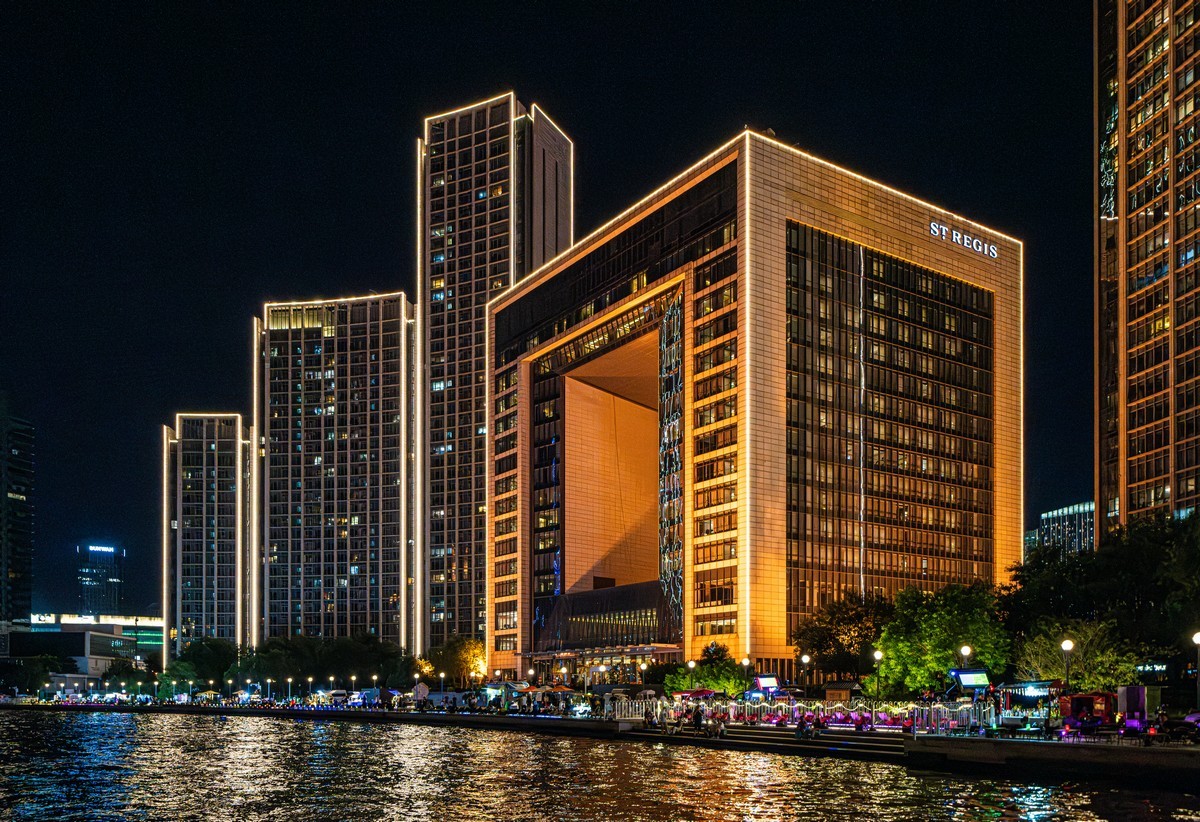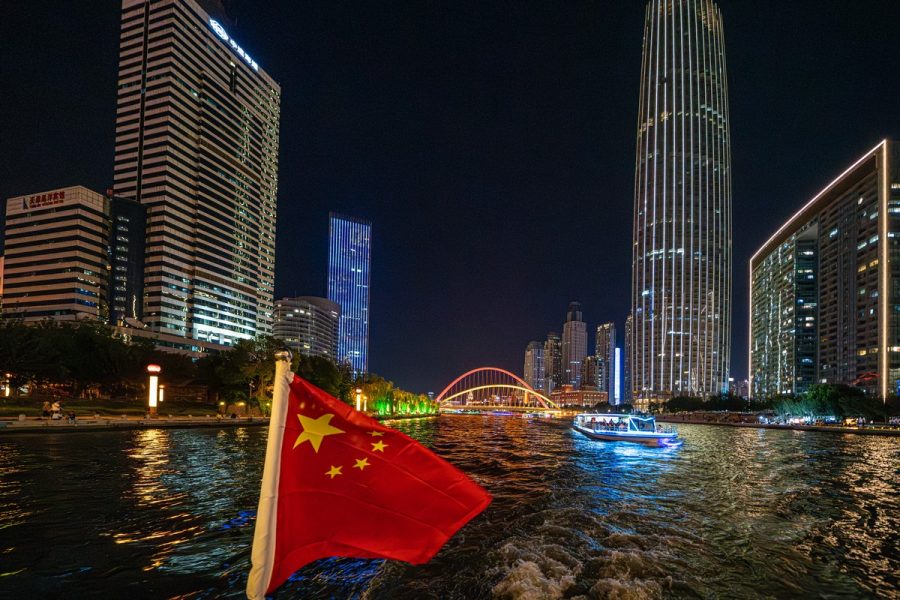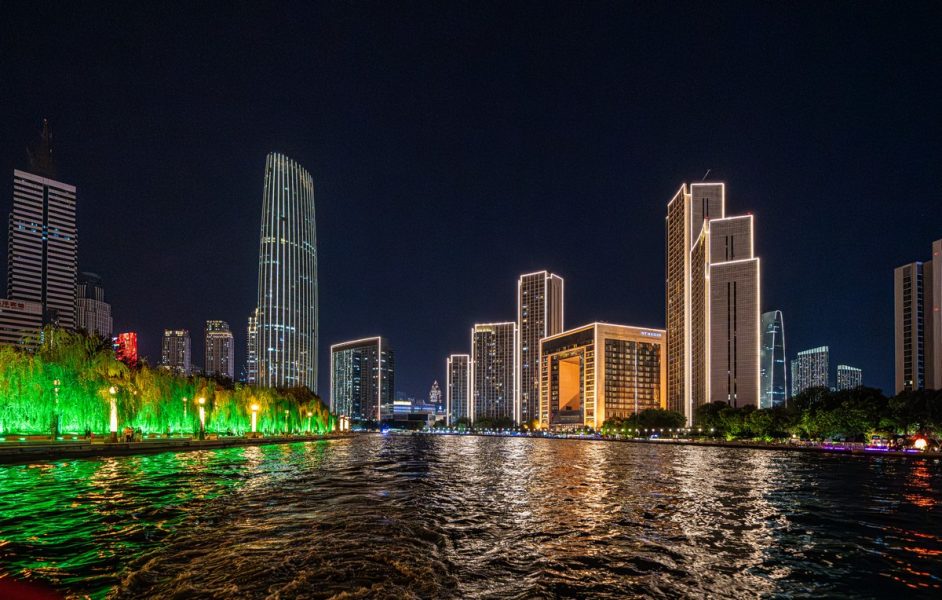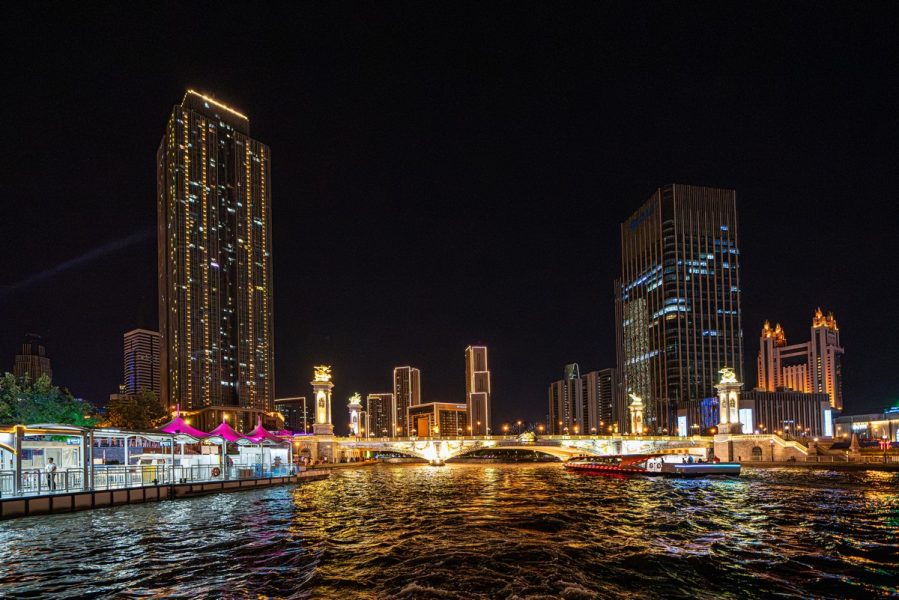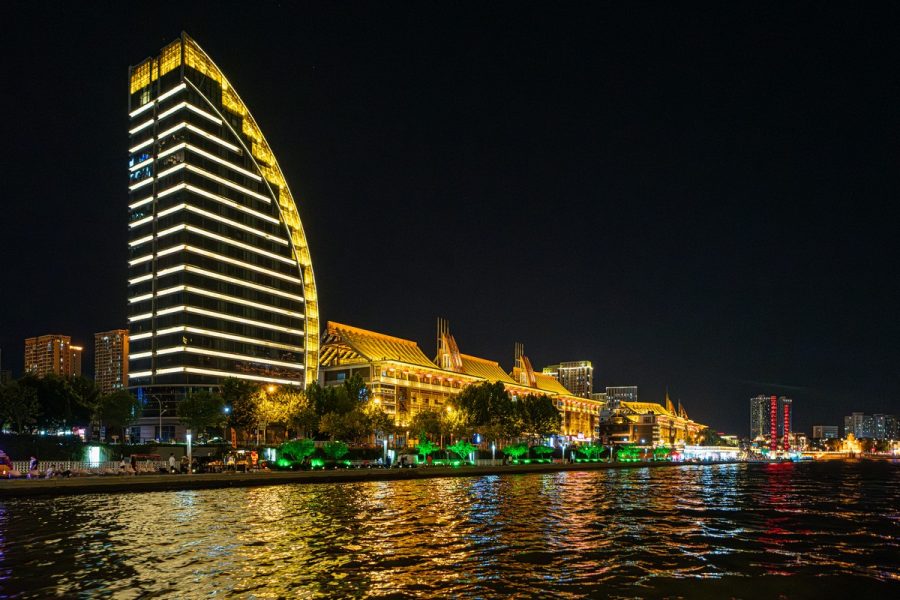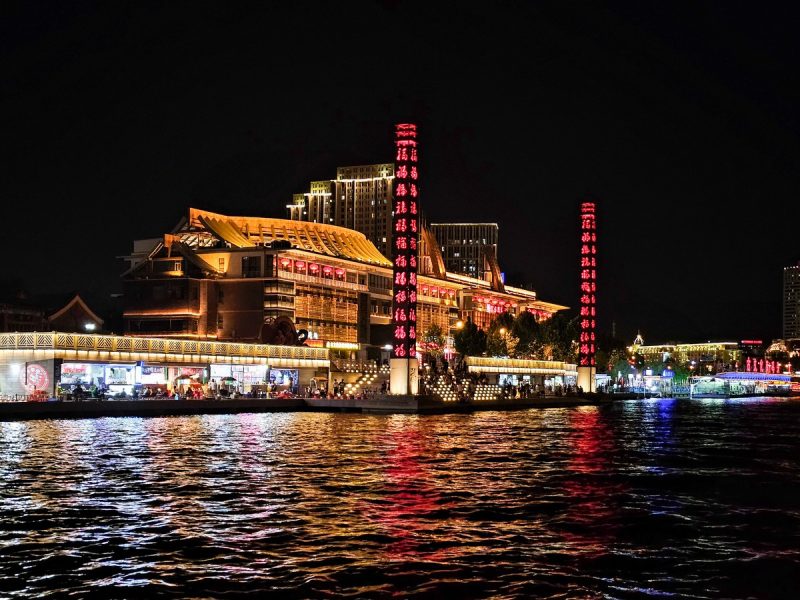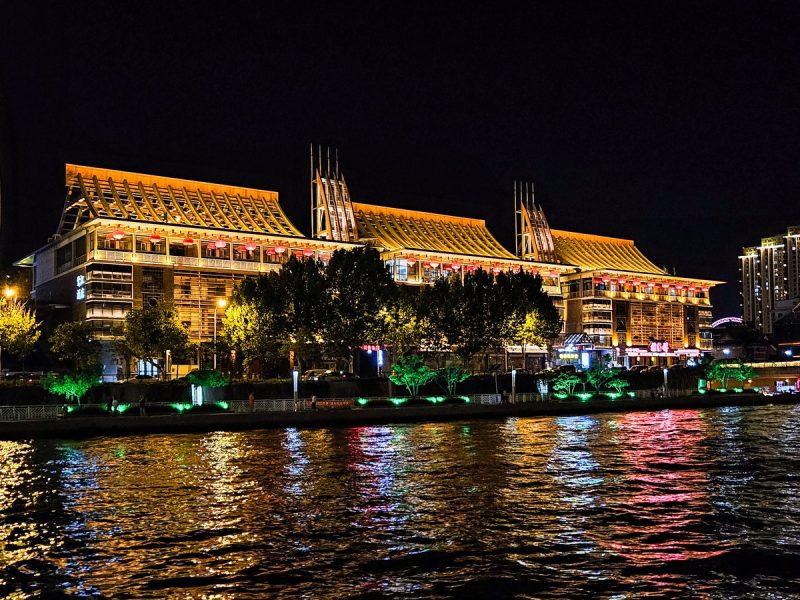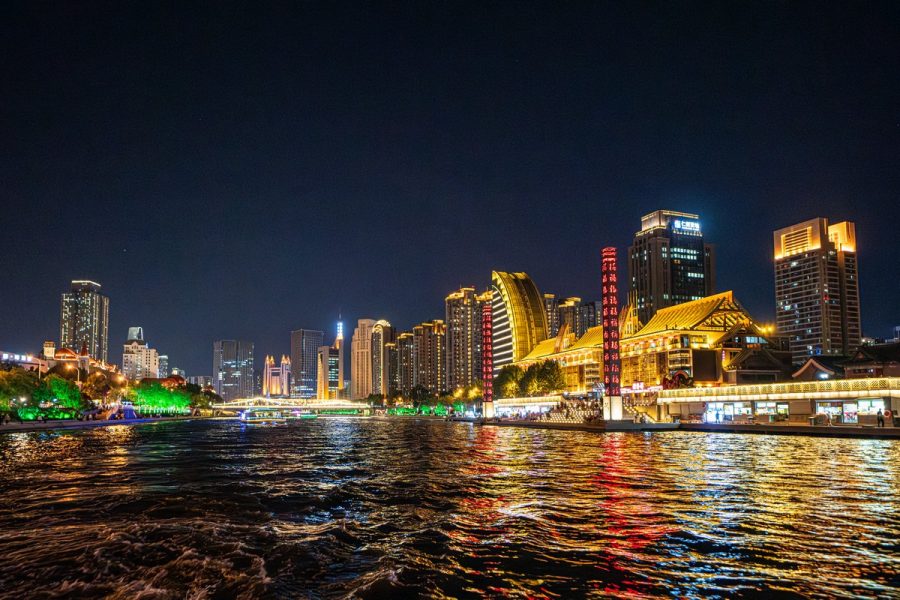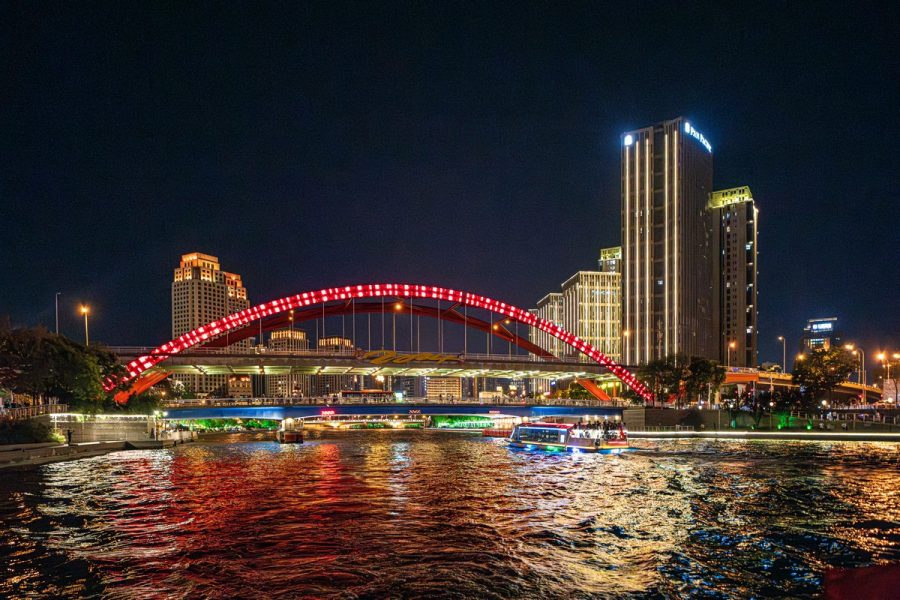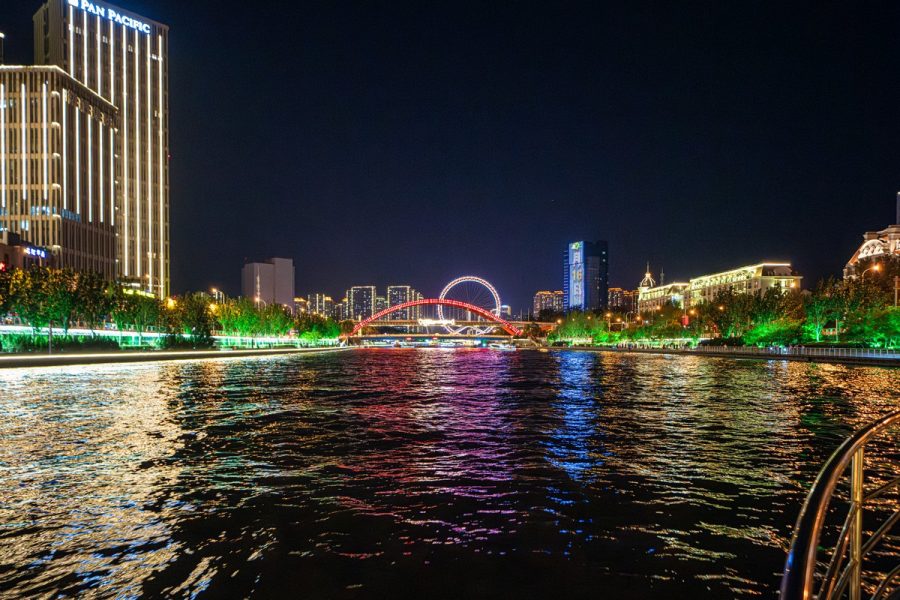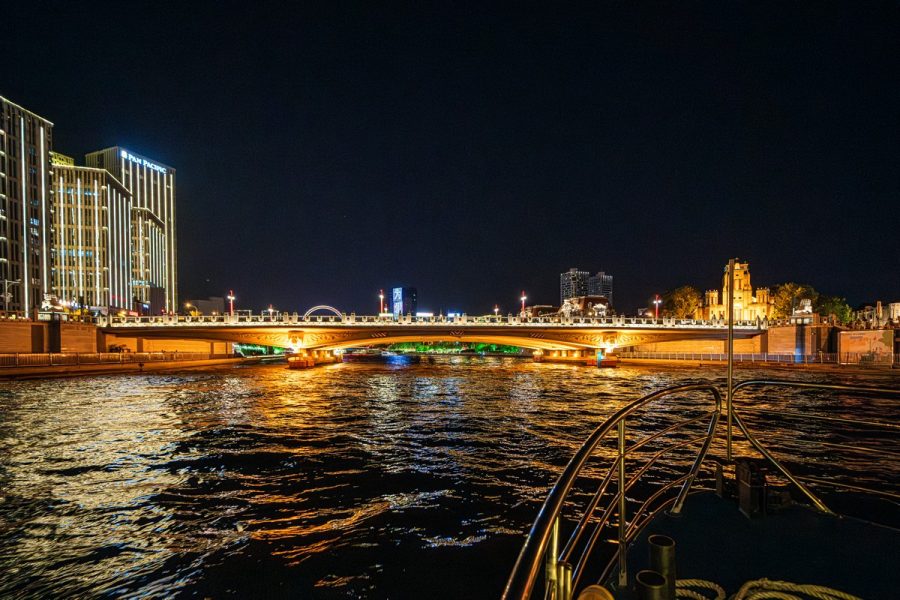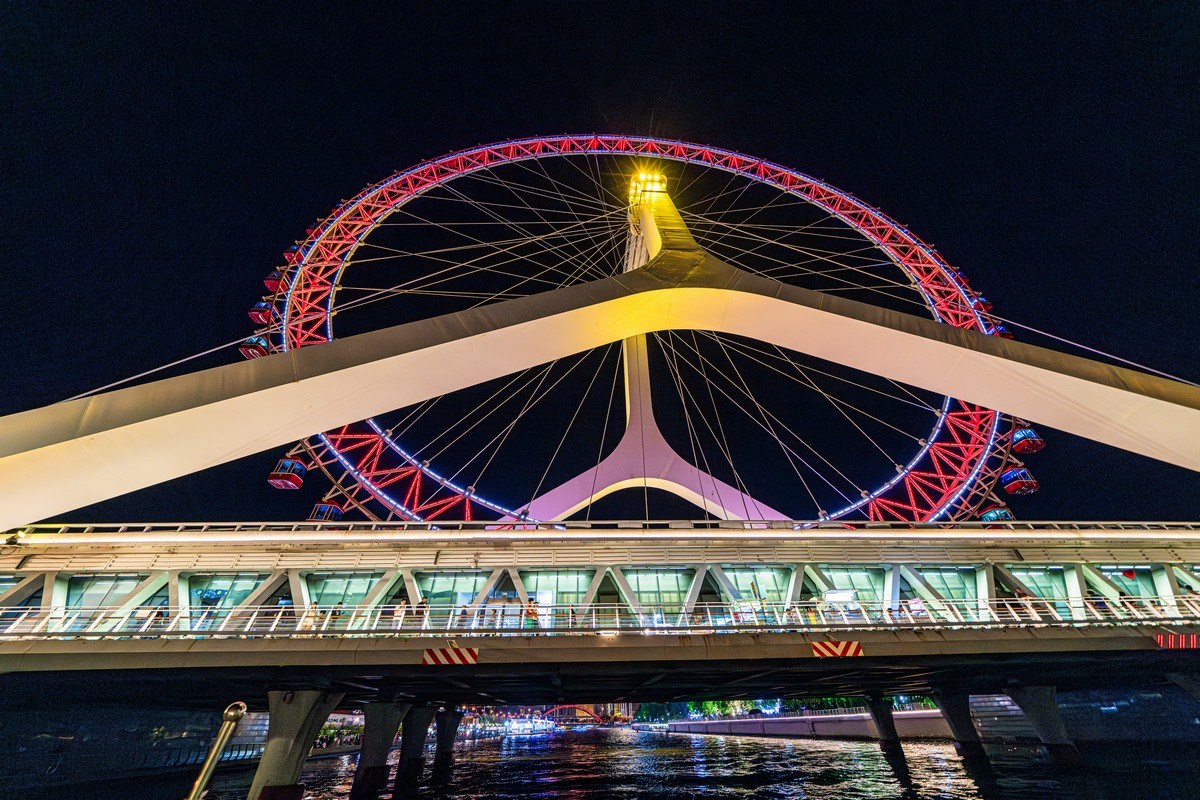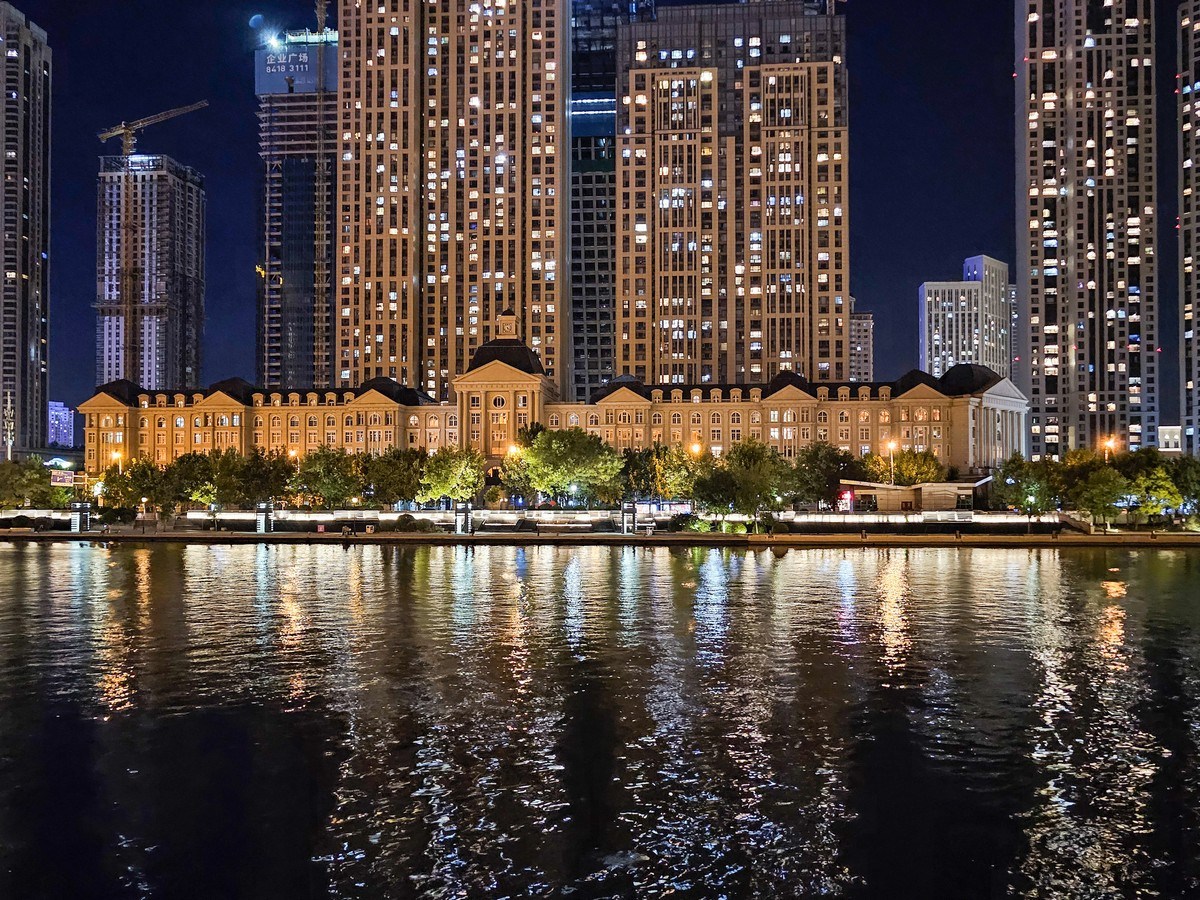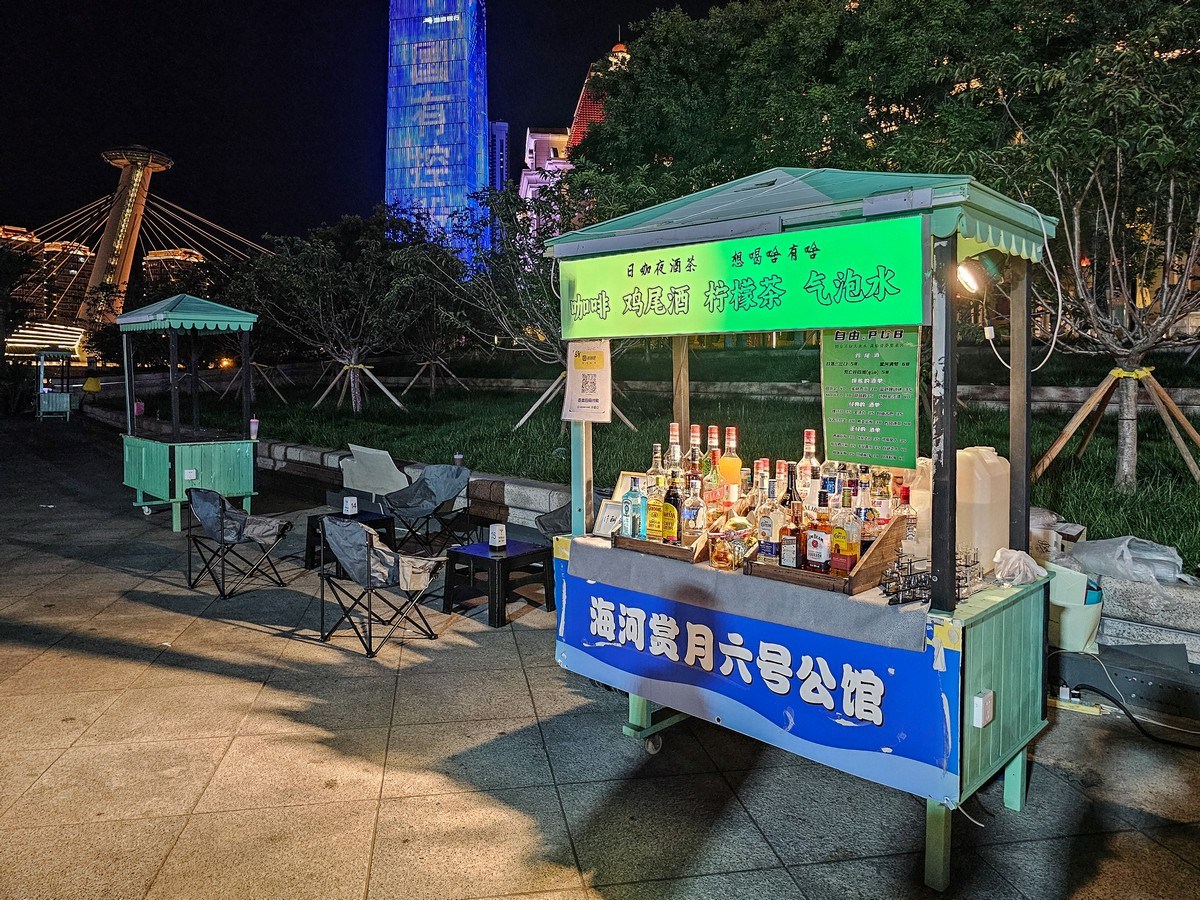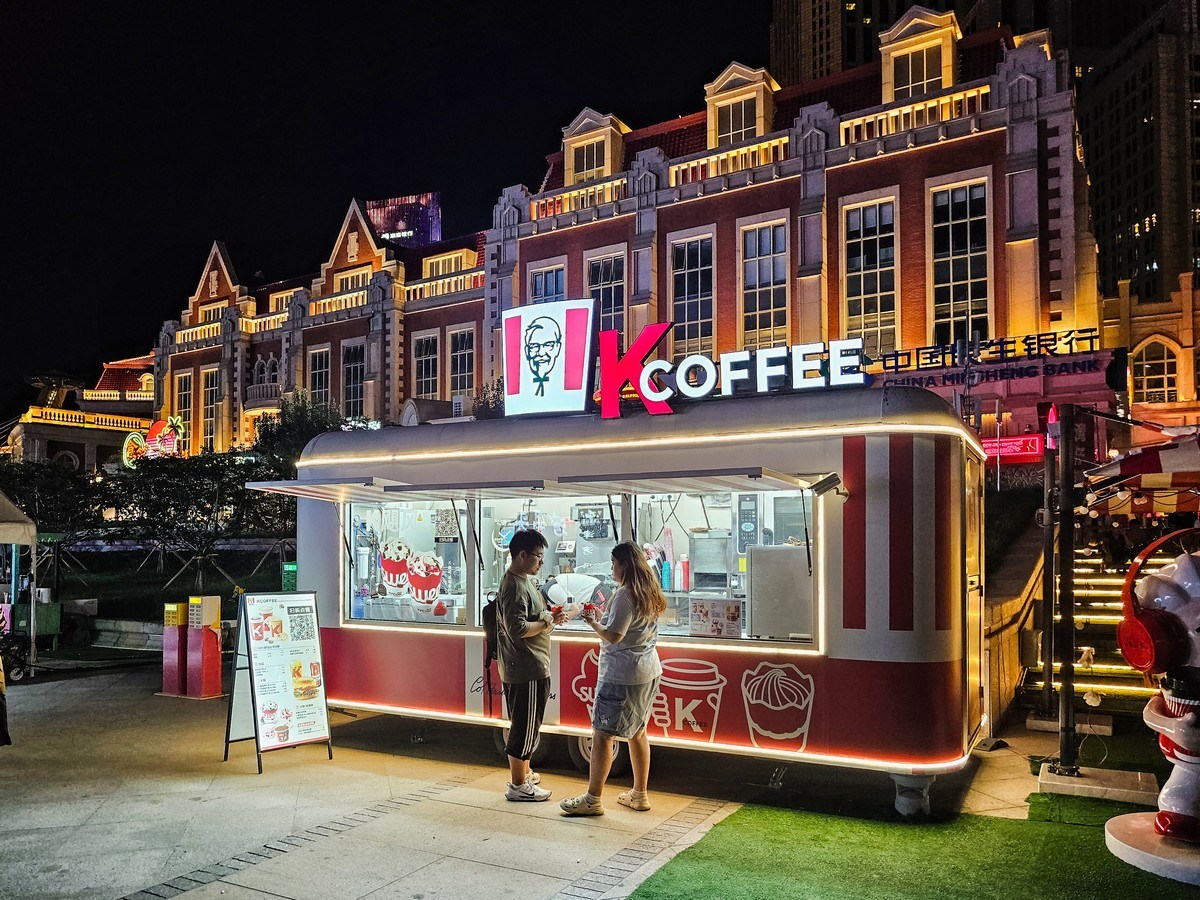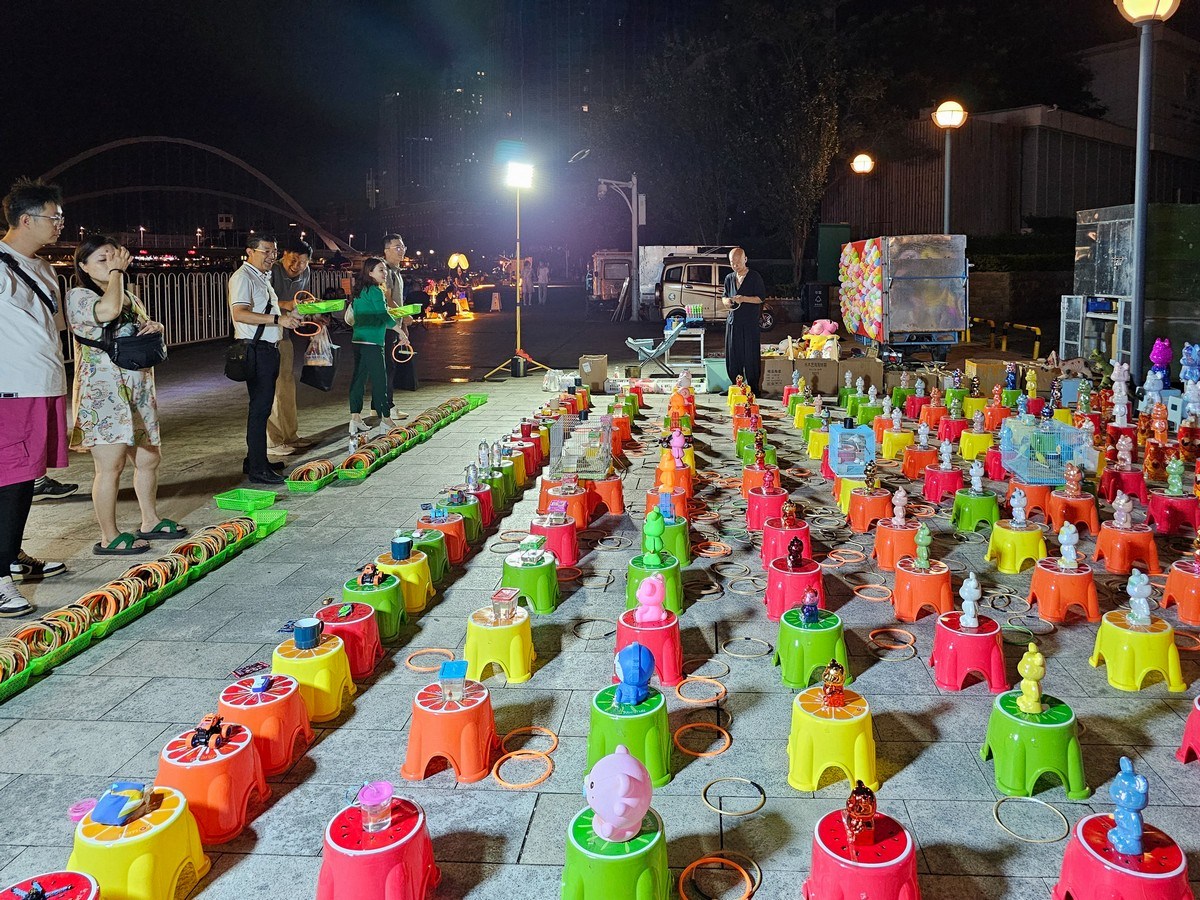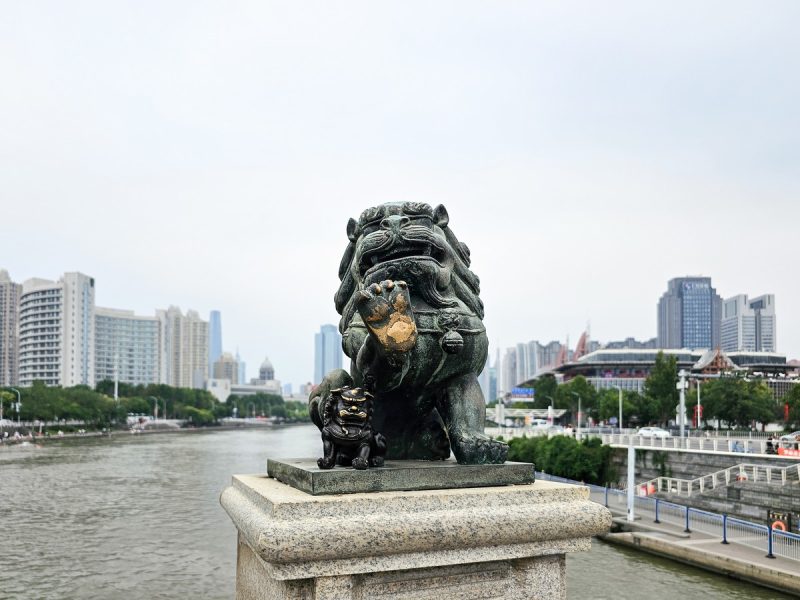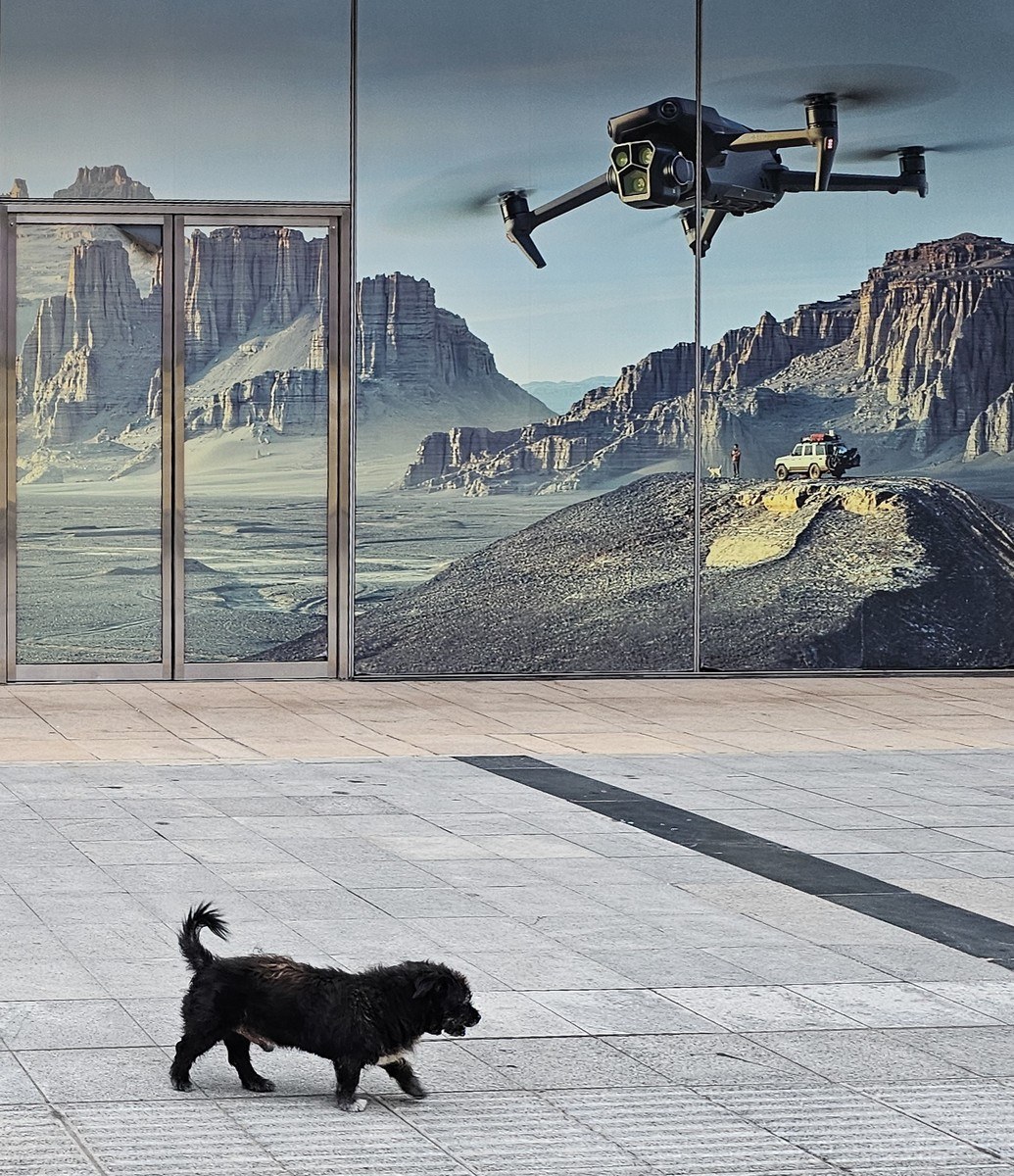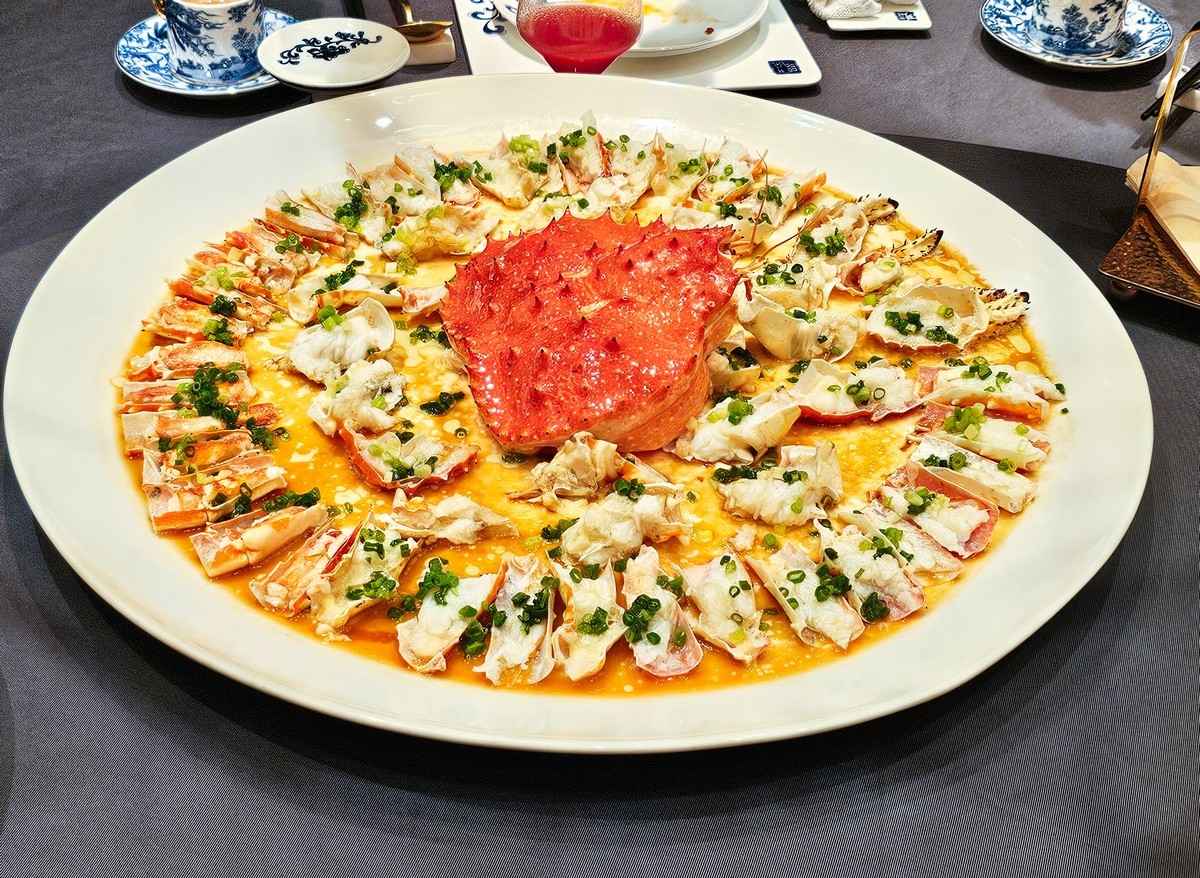September 19, 2024
A very European Chinese city – and it’s not Hong Kong!
Now for a quick review of my recent business trip to Tianjin, China…
The first thing that came to mind when we reached downtown was: “Where are all the millions of Chinese folks that I’ve been told live here?” For the mentioned downtown sure seemed rather deserted empty for a city of 14 million – just as it did on my previous trips to the city (2012, 2019)…
The internet and my other senses tell me this city is far from an uninteresting place to live. People have called the banks of the river here home since ancient times, which makes sense given its climate. But then the Chinese emperors moved the capital north to Beijing (I still don’t understand why), which in Chinese literally means “Northern Capital” – 北 běi for north and 京 jīng for capital.
The migration of the imperial capital north and subsequent prospering of Tianjin happened (if we believe unverified sources) around 600 years ago (see here), and the city turned into a southern port for the capital, which I’ll show photos of a little later. This was the first time these river backwaters got lucky. Then for centuries Tianjin was a major transit point from the southern provinces to the capital, and from the capital and back.
The city got “lucky” for the second time during China’s century of humiliation following the Opium Wars, when the country had to make concessions with regard to its independence and territories – opening up said territories for foreign trade. Tianjin was one such place, which led to the mixed Chinese-European urban architecture I show more of below.
To top it off, in 1984 the Tianjin Economic-Technological Development Area (TEDA) was formed as one of the first free-market zones, which later undermined (in a good way) the economy of China. It was here where China truly started to become great again.
A few downsides:
1. There’s a high-speed railway line from Tianjin to Beijing, so a lot of locals commute to work in the capital with its higher earnings – much to the detriment of local businesses.
2. In 2015, some shipping containers carrying chemicals caused massive explosions in the port, leading to many locals moving away out of fear for their safety. The equivalent of around 250 tons of TNT exploded, and apparently now there’s a small lake at the epicenter of the blast. Yikes.
Still, the city’s upsides – its location plus the other lucky occurrences listed above – far outweigh the downsides. Let’s see what those upsides look like today – on a stroll along the empty banks of the city’s main river!…
…That river is the Hai river (海河, literally “Sea River” or “River to the Sea”, but honestly not even the locals can agree on what the correct meaning is).
Here I should mention a caveat regarding the Chinese language. There are no exact translations of Chinese words into English (or other languages). And since one and the same observations, events, sensations or whatever are described in slightly different ways in different languages, the result (when it comes to translating Chinese into different languages) is often one that can be best described as random – hardly fixed at all (like it is for most other languages).
Thus, no matter how much I tried, I could never get an answer from locals here to seemingly simple questions – like what’s the name of a Chinese tea consisting of two hieroglyphs, “well” and “dragon”: does it mean “the dragon’s well” or “the dragon from the well” (or something else)? They couldn’t understand my questions – let alone answer them.
Still, I guess… if you think about it, what’s the difference? A dragon from a well, or a well with a dragon inside it? We have to consider how Chinese culture is much older than ours; maybe they’re simply way ahead of us in understanding that such details don’t really matter. Less anal; more spiritual :)…
Anyway, let’s get back to the Sea-River-Hai-海河 and cross the bridge to the other side ->
As you can see – it’s a pedestrian bridge. Great views therefrom ->
Skyscrapers and fishermen:
You may notice the color of the sky switching from blue to gray in these pics change. That’s quite normal: I took the photos on different days :)
I wonder – are those lions snarling or laughing? :) ->
A bridge across the river with no traffic jams! Plus check out the design, I wonder why it looks like that? ->
If you turn from the bridge back toward the river, you see a wildly non-Chinese and mind-boggling collection of erotic statues right on the embankment ->
Locals don’t seem to have a problem swimming in the murky Hai River. There are “No swimming” signs all over the place too, but here the prohibitions are more like invitations to ignore them )
The further we go – the more surprising the diversity and whimsy – including fun street ring-toss games:
I’ve mentioned how Tianjin has a rich history and is a southern port of Beijing; it also has a historic downtown ->
It looks authentic enough; however, almost everything is new. Still – no one seems to mind…
This place is called the Tianjin Ancient Culture Street, but it’s actually a few different streets forming a small block completely filled with shops, restaurants, street food, and a cheap outdoor market offering practically everything – from traditional local products to gems and catapults!…
Fans, etc.:
We only spent around half-an-hour here since we didn’t plan on doing any real shopping.
Starting in the second half of the 19th century, concessions were granted to Europe, giving rise to a European quarter in the historic Tianjin city-center with distinctly non-Chinese architecture and culture. But everything here now is new too. For example, a completely untraditional for China traditional Bavarian restaurant:
The Venezia Italian restaurant:
There’s a whole street of them! ->
Dante Square and Marco Polo Square:
A double-decker tourist bus. To make the experience even more genuine, that car is driving on the left :) ->
Wait, did I miss something? KFC is a coffeeshop-in-a-trailer now? ->
A wax museum…
…with Bruce at the entrance ->
On the other side of the river the classical European look continues:
A giant mall where you could get lost – forever:
Wait, I see something edible. Let’s check it out…
Fried locusts!
Here’s the very Gaudi-esque China House. Too bad we didn’t have time to go inside. We’ll check it out next time…
You can climb all the way up to the 58th floor of this here skyscraper. It’s not exactly for tourists, but you don’t need a pass to get in. You just need to know where to go :)
The views up here are just omg-wow! But that’s often the case when you look down at the world with a bird’s eye view:
Below are the embankments, bridges and districts we’d just walked around:
Boat cruises are a great way to see the city. And what’s that to the right, a stylized Tower of London?
The Eiffel Tower! ->
Rising up above the skyline is the unfinished Goldin Finance 117 skyscraper. It’s almost 600 meters tall, but construction was halted in 2018 and today it’s still unoccupied. In fact, there’s a whole unfinished neighborhood around it with multi-story buildings and even large villas. The frames went up fast, but then everything came to a standstill.
It’s starting to get dark, which means it’s time for some city nightlife!…
Before I get to that though, brief info on the business part of our trip to Tianjing: partner conference, meetings, speeches, interviews – all as per the “just as we like it” format…
My fellow travelers O.S. and Y.S. happened to make the headlines in the Chinese press as participants in a cybersecurity conference:
But I won’t overload the brain of the dear reader with official reports from the Chinese press :). It’s better to return to the related subject of Tianjin tourism. Especially since night has fallen on Tianjin, and at night they have some absolutely mind-blowing light displays here. Let’s board a river boat and marvel at the illuminations!…
A fantastic sight:
No, no, the boats here are not like that – they’re a bit more basic :)
It looks like a life-size model (but made of stone) of those ships that China used in the early 15th century for sea voyages to Southeast Asia, India, the Middle East and even Africa.
The Ferris wheel isn’t the biggest, but it does span the river :)
Not only are the bridges all different shapes – they’re also illuminated differently:
The hotel where we were staying also looks good:
And so on down the river:
The old seaport, and beyond that the historic district I described above:
We turned around somewhere over there and went back the same way. It’s an excellent ride. About 40 minutes.
That’s it, we’ve arrived!
To conclude, here are some atmospheric photos taken by O.S.:
This bridge looks like its “cousin” in Paris (Pont Alexander III), but only from a distance. If you take a closer look, you’ll see lots of other details. Some may remind you of elements of the Trevi Fountain in Rome:
In some places, the architecture isn’t Chinese at all:
In the evening, the embankments are lined with numerous bars where they serve it just like this. I can’t say anything about the authenticity or quality of the drinks – I didn’t try them.
Once again I marveled at the diversification of Chinese KFC :)
Evening entertainment on the waterfront:
And other miscellaneous stuff:
Good shot :)
And the way they prepare Kamchatka crab in one of the restaurants here – wow!
That’s all from Tianjin. Thank you for your attention!
